Dubai is a city of superlatives. It’s home to dozens of the highest, widest, most expensive buildings in the world. Aside from record-breaking landmarks, Dubai is widely considered one of the world’s most exhilarating destinations. Alongside its golden beaches and turquoise coastline, it’s packed with world-class shopping, dining and nightlife. Dubai hosts dozens of major sporting events throughout the year, as well as art, film, literature, music and comedy festivals and events.
A trip to Dubai doesn’t just have to mean bougie beach clubs and shopping malls though. It is also home to Farmer’s Markets, traditional souks and plenty of outdoor activities. This guide aims to be a complete overview of Dubai, from all the practical information you could need, as well as snapshots of each of the different neighbourhoods across Dubai. Read on to find out more!

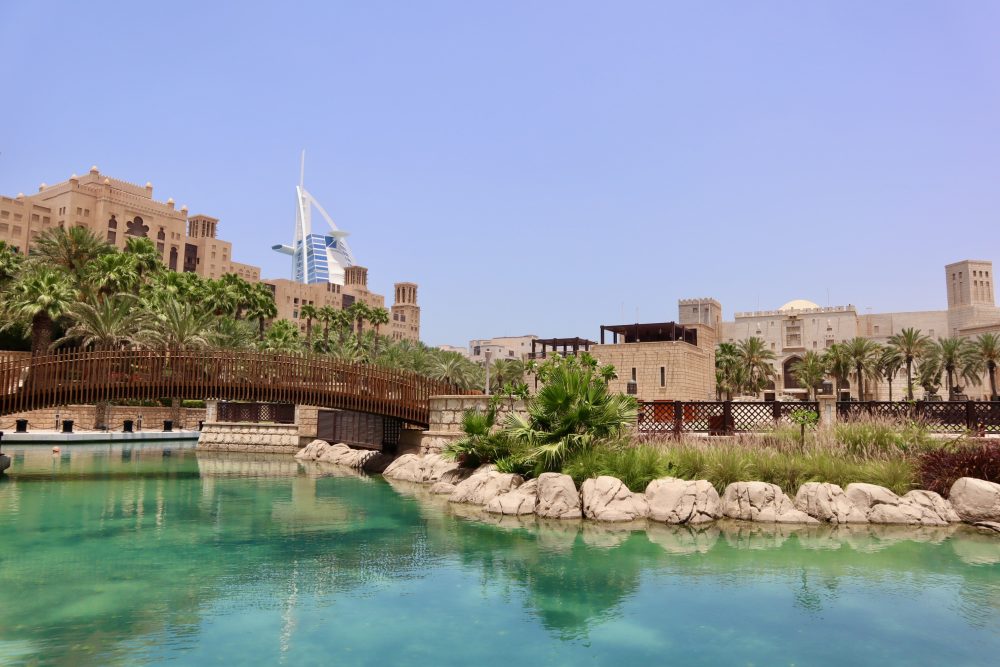
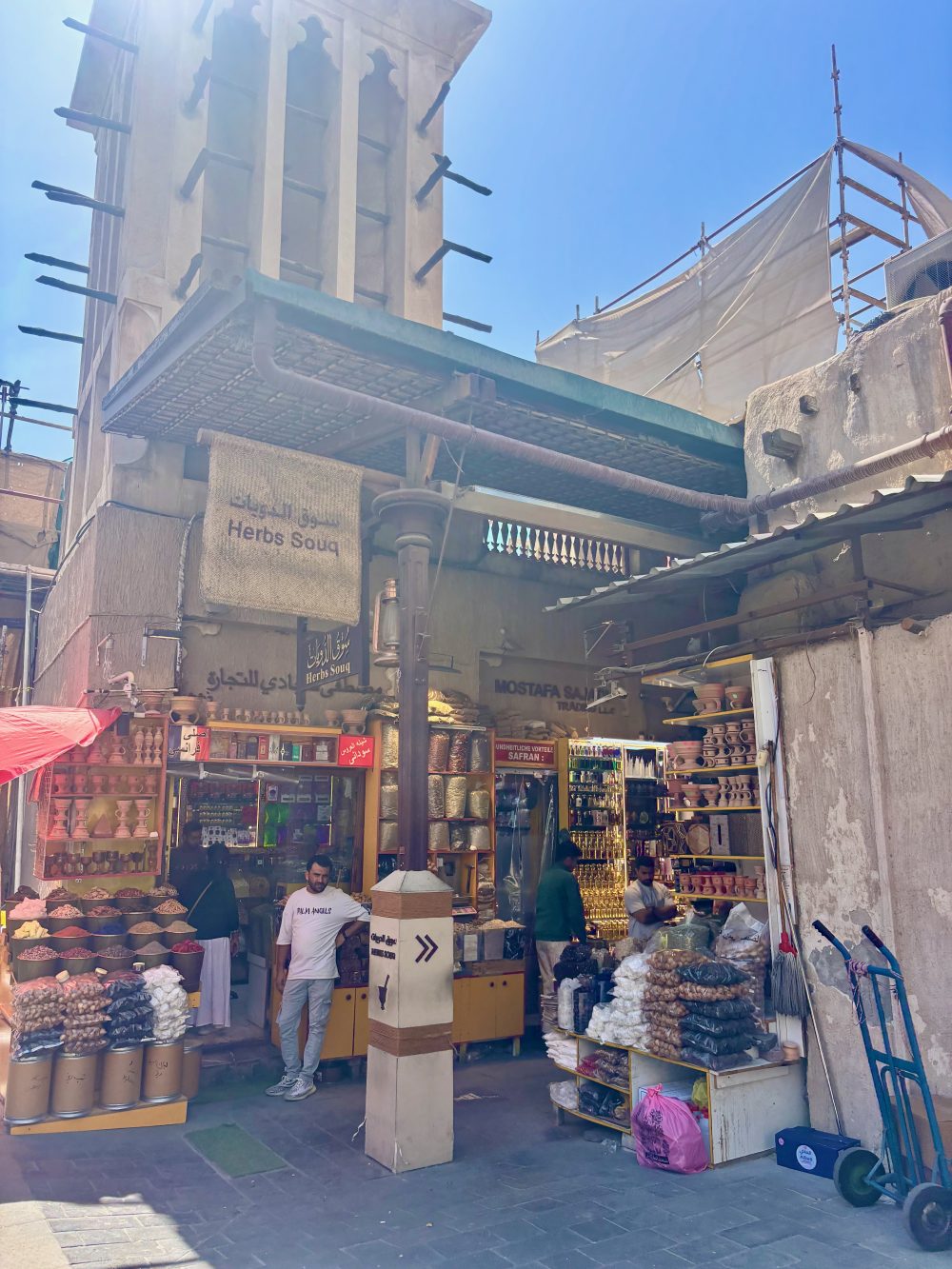
History/Background of Dubai in the UAE
It’s hard to believe that just 50 years ago Dubai was little more than a fishing village beside the famous Dubai Creek. Back in 1800, it was this location where the Bani Yas tribe and the forefathers of the Maktoum dynasty first settled on the banks of the Dubai Creek. They were already commercially savvy, and drew attention from neighbouring traders from India and other Gulf countries. And by the late 1870s, Dubai had become one of the main ports in the region.
The Creek was once congested with wooden abras and dhows, where traders unloaded their cargo. It was a chaotic, bustling port lined with Arabian souqs that you can still experience today.
Pearls later became a key commodity, followed by gold, which helped the Emirate become increasingly prosperous. However, and incredibly, it wasn’t until 1961 that electricity came to Dubai.
In 1966, oil was discovered in Dubai. A huge influx of foreign workers arrived to work in the industry, and by 1975, the city’s population grew over 300%. During this time, in December 1971, Dubai, together with Abu Dhabi, Ajman, Fujairah, Sharjah and Umm al-Quwain, formed the United Arab Emirates, with Ras al-Khaimah joining one year later.
Dubai’s new-found fortunes and independence was just the beginning of the transformation of this small fishing village into the futuristic, multi-cultural and fast-paced metropolis of today.
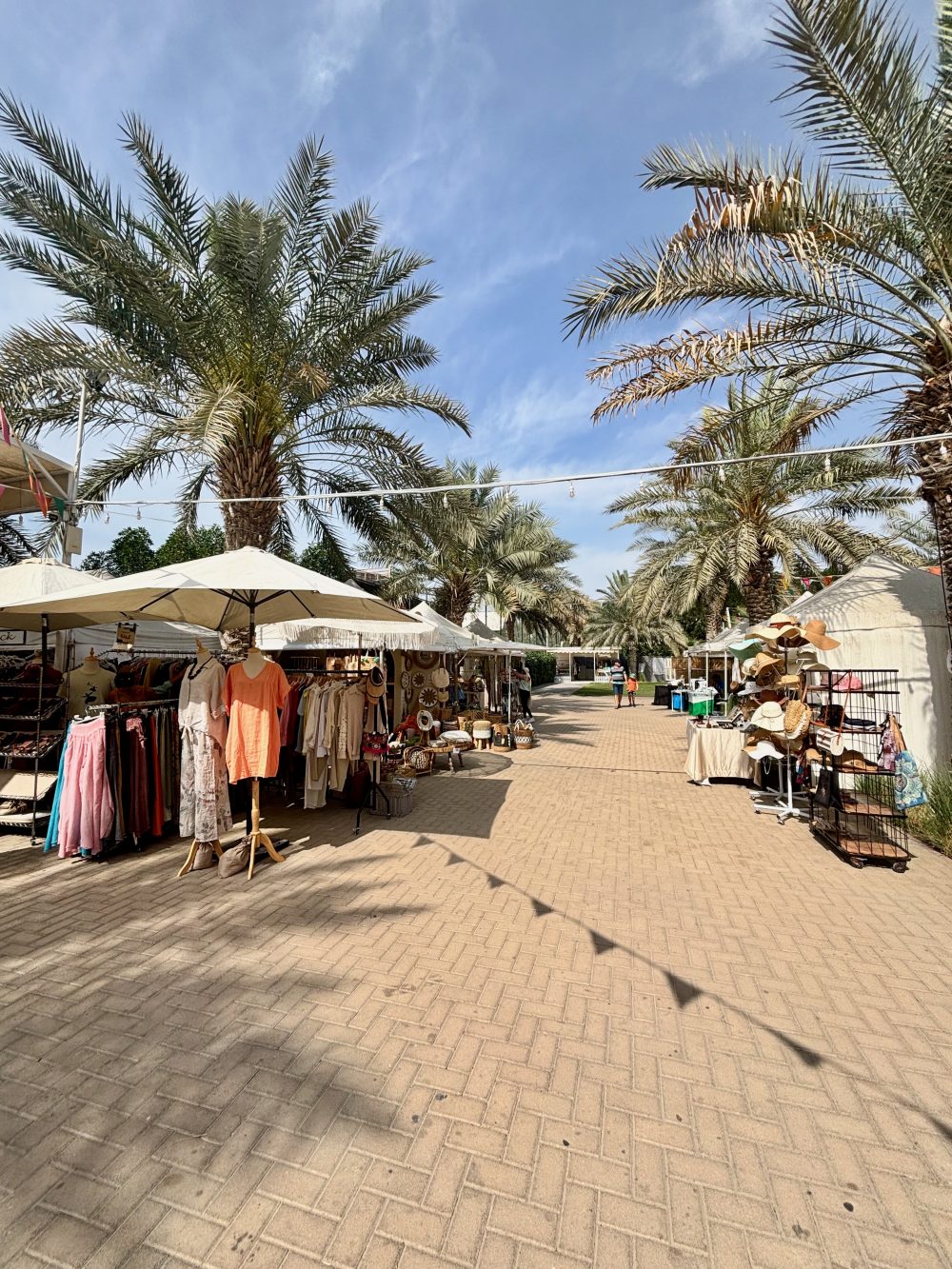

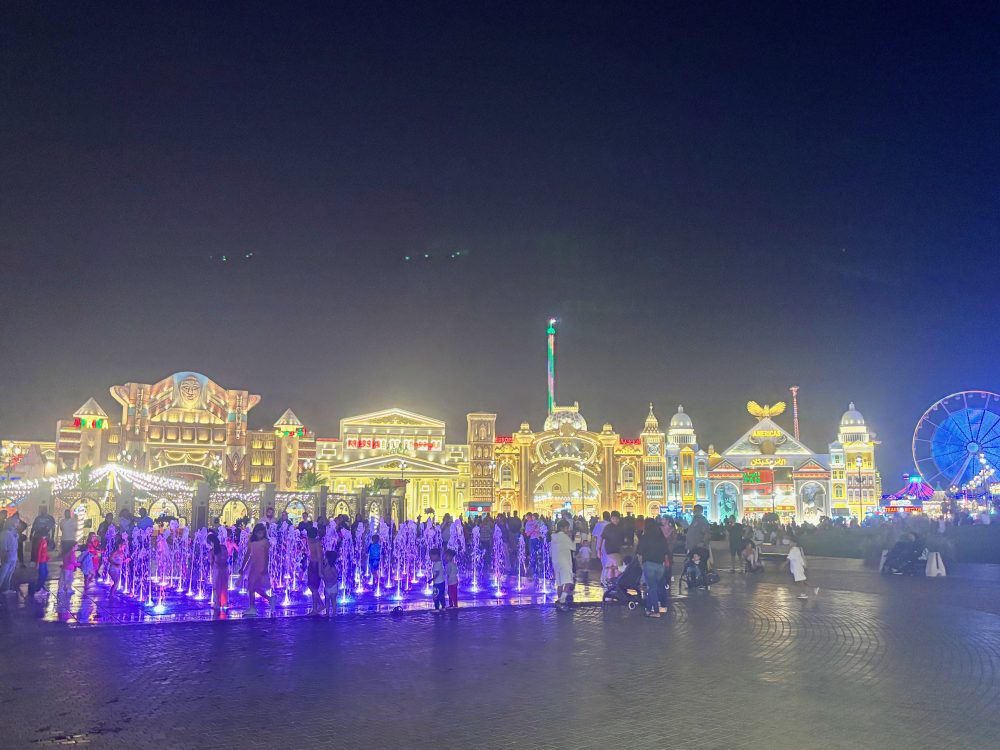
The leader, Sheikh Rashid bin Saeed Al Maktoum had a vision, and really led the development of the infrastructure to create a city of the future.
He also opened Port Rashid, followed by Jebel Ali Port, which became the world’s biggest manmade harbour and the biggest port in the Middle East. And next began the construction of some of the early buildings on the Sheikh Zayed Road. He then launched Emirates Airline, followed by Dubai Internet City, drawing international businesses to Dubai such as IBM and Microsoft.
Tourism became a focus in 1999, when the iconic Burj Al Arab was opened on an artificial island off Jumeirah Beach. In 2006, the Palm Jumeirah opened, a man-made palm shaped island that increased Dubai’s shoreline by a total of 520 kilometres.
Away from the coastline, the desert is a vital part of Dubai’s ecosystem, and its resident camels are an intrinsic part of Dubai’s history. They have been described as the region’s ‘ships of the desert’, with their longstanding important role of carrying Bedouin people from oasis to oasis. These majestic and much-adored creatures have an enduring emotional bond within Emirati culture. Falconry is also closely interwoven in Dubai’s cultural fabric and have long been a vital part of life in the Middle East, whether it be for hunting or in a falconry display.
Today, Dubai is a serious city focused on tourism. New attractions and hotels are opening at serious pace, meaning there is always something new and interesting to visit each time!
Dubai Travel Guide: Useful information
Dubai visas and entry information
The metropolis of Dubai is one the seven emirates in the United Arab Emirates, so when checking for entry requirements, this is the country to check. For UK travellers, a visitor or tourist visa is issued free of charge on arrival for 30 days. Your passport is stamped as you go through immigration.
All travellers need a passport with an expiry date of at least 6 months beyond the date of entry to the UAE.
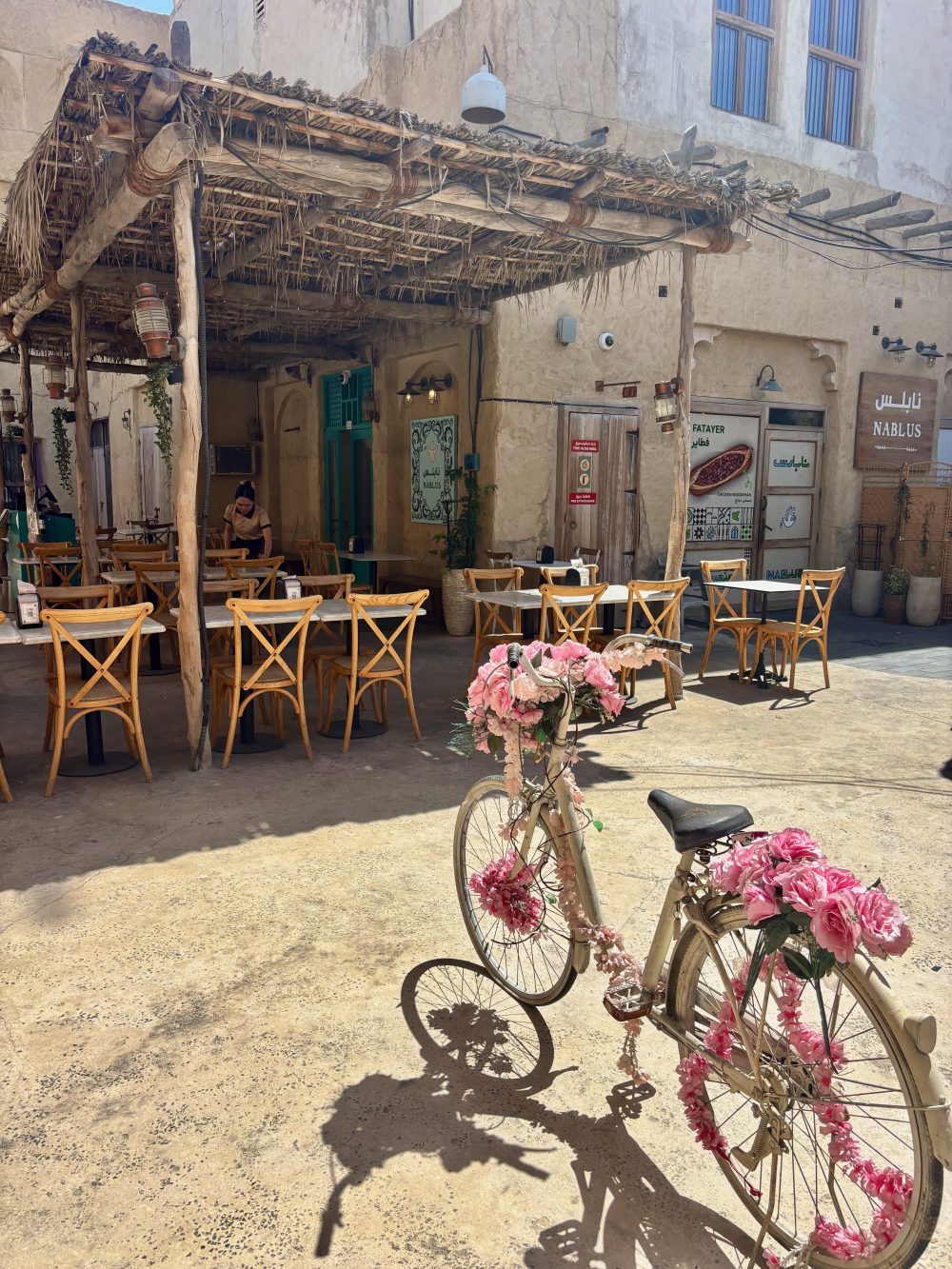
How to get to Dubai?
Dubai is connected to the world with hundreds of flights per day. Emirates connects Dubai with cities across the globe, but other airlines fly in too such as British Airways. The main airport is Dubai International Airport, which is currently the world’s busiest airport. But the newer Al Maktoum Airport (DWC) also receives flights from other carriers such as Wizz Air. This airport is actually being developed into the world’s largest airport in the coming year and will be five times the size of the current Dubai International Airport in the future!
How to get around Dubai?
Dubai is incredibly easy to get around on public transport – in fact, I’ve written an entire guide on the topic. Every time I go to Dubai, I cannot believe the advancements being made in public transport.
But the city is dominated by cars, so it’s also popular to hire a car in Dubai or use taxis to get around.

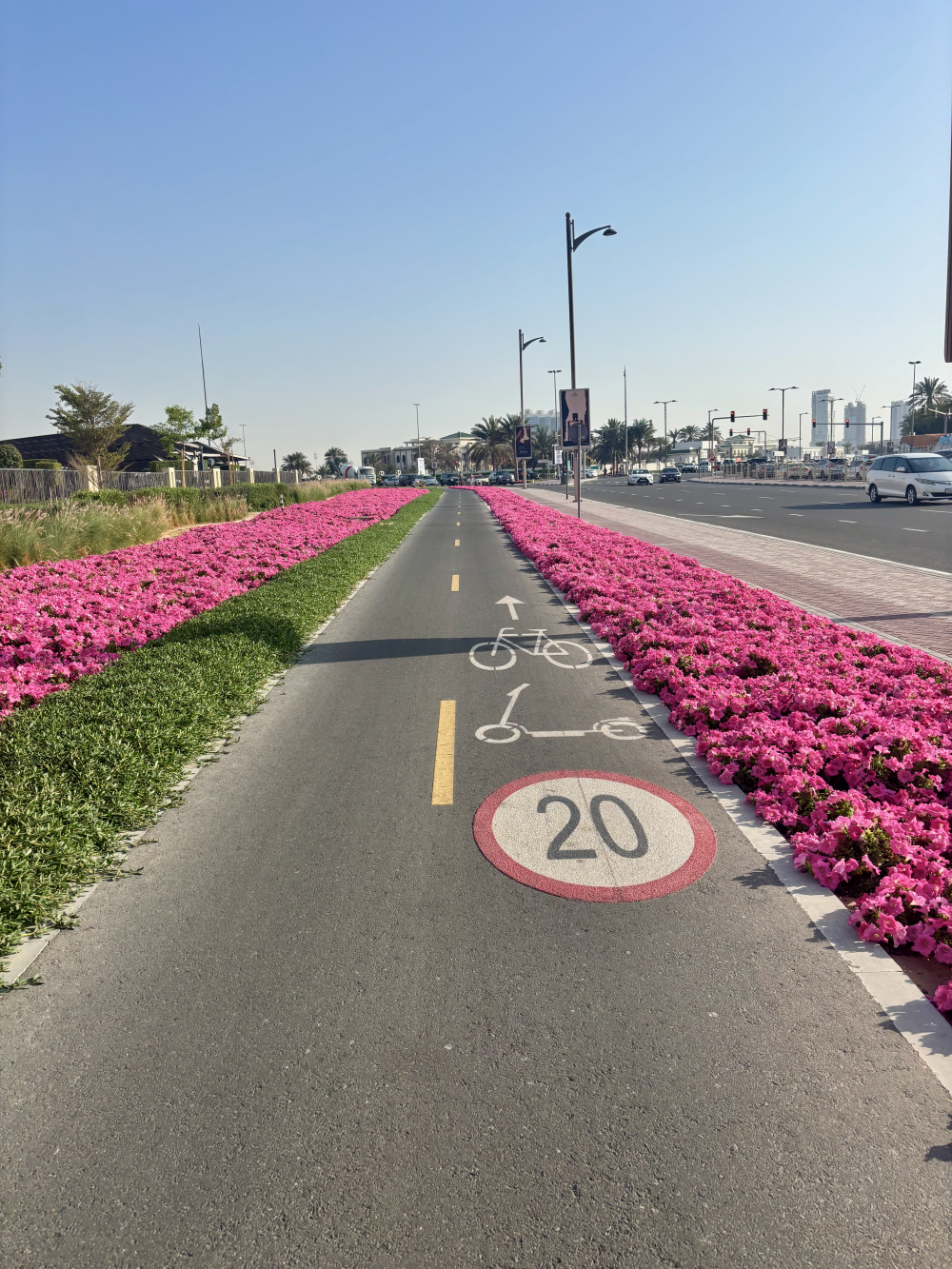

When is the best time to go to Dubai?
As a desert city, the temperature really cranks up from April/May through to September. In fact, June, July and August are unbearably hot, and is it not advisable to go to Dubai during these months.
The best months to visit are between October and April. This period means you will enjoy warm to hot daily temperatures, with plenty of activities and events taking place across the city.
Ramadan and Eid is another time to factor. Its timing varies each year but it’s usually landing between March and May. In previous years, it would have meant a lot of the city’s population would stay at home during the days, with lots of restaurants and cafes closed until sunset. But things are changing quickly in Dubai, and it’s now very common to see eateries open all day and non-Muslims eating during the day in public.
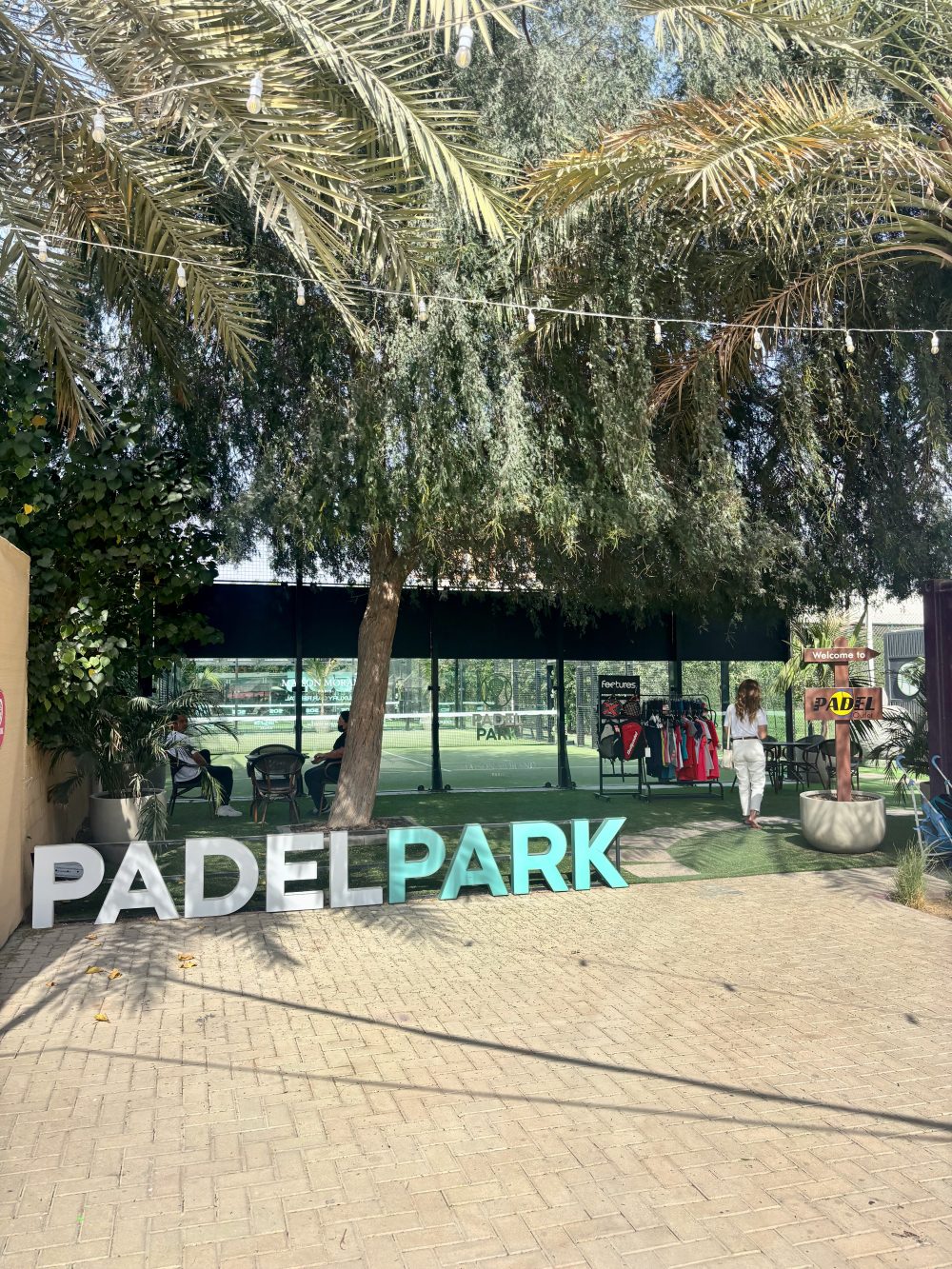
Currency and language
English is very widely spoken in Dubai, and with the sheer number of nationalities calling Dubai home, it is the most common language. Currency in the UAE is the Dirham. Card and contactless payments are commonly used in Dubai, so you don’t typically need to carry a lot of cash.
Hotels in Dubai
There are almost 1,000 hotels in Dubai. There is absolutely guaranteed to be a hotel brand to suit your budget and style in Dubai.
On the more affordable end, I love the home-grown brand, Rove Hotels. This brilliant group of hotels cater to the modern-day explorer, and are designed with so many practical and thoughtful touches.
The three-star Rove properties are part of Dubai’s growing mid-market hotel inventory. Room rates range from around £50 to £150 per night, depending on location.
I personally love the Rove City Centre property in Deira, and have stayed there twice. The location is excellent, with a free transfer to the airport, and a 3 minute walk to Deira City Centre Metro station.
The hotel has an excellent swimming pool, as well as the most comfortable rooms with excellent power showers.


While Dubai will always be known for its luxury and high-end hotels, the city has so many options for all price points and to appeal to all kinds of traveller.
Throughout this Dubai neighbourhood guide, I’ve put in hotel suggestions covering affordable, mid-range and luxury.
What to eat in Dubai?
Dining in Dubai gives a truly unique opportunity to sample cuisines from the 200 nationalities that call the city home. Dubai has emerged as a global culinary capital and has long caught the attention of Michelin-starred chefs. From world-class dining in plush five-star hotels, to casual cafés or traditional roadside eateries, Dubai really does have it all.
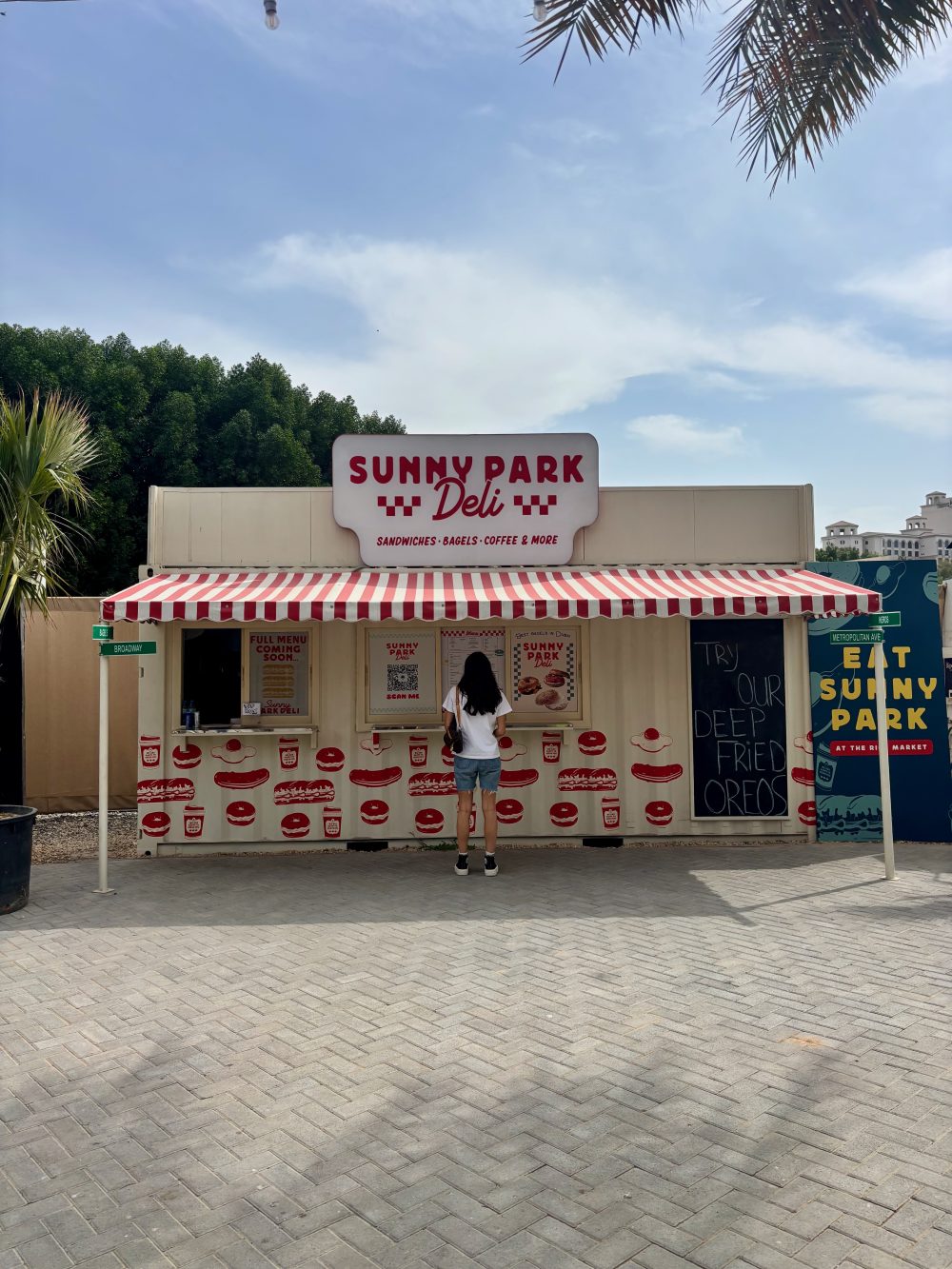
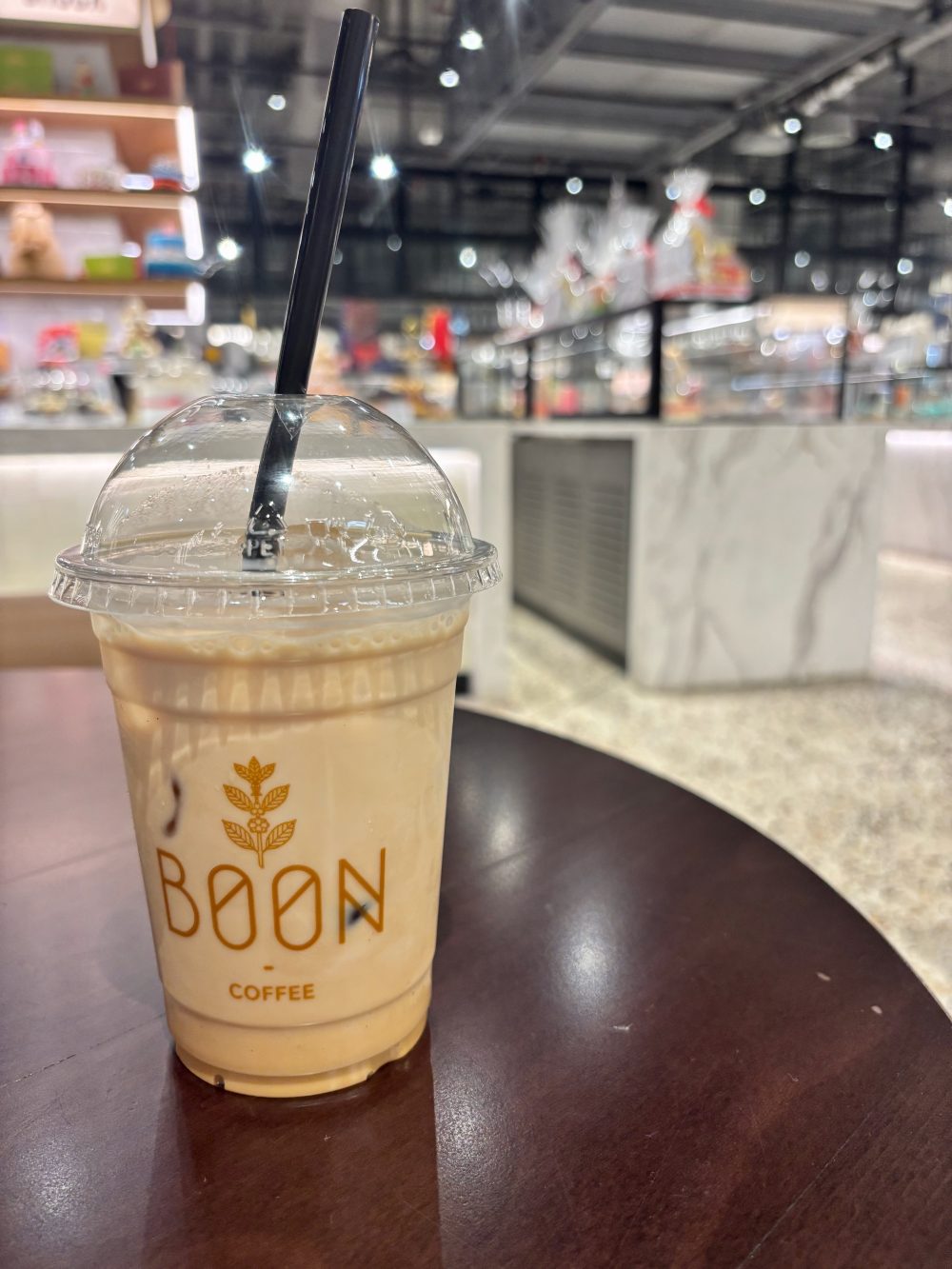

There’s also no shortage of excellent coffee shops throughout Dubai!
Dubai’s gastronomical scene reflects the city’s development into a multicultural melting pot but traditional Emirati cuisine is a must-try whilst in Dubai.
One of my favourite things to have in Dubai is flatbread and a mezze platter. In terms of mains, Al Machboos is the much-loved national favourite dish. It’s base is rice, and then either meat, chicken or fish, seasoned with cinnamon, cardamom and cloves. Another dish to try is Fraeeth, which consists of meat and vegetables layered with thick slices of bread. To satisfy my sweet tooth, make sure to try the Emirati Luqaimat. This is fried dough served with date syrup – a delicious dessert!
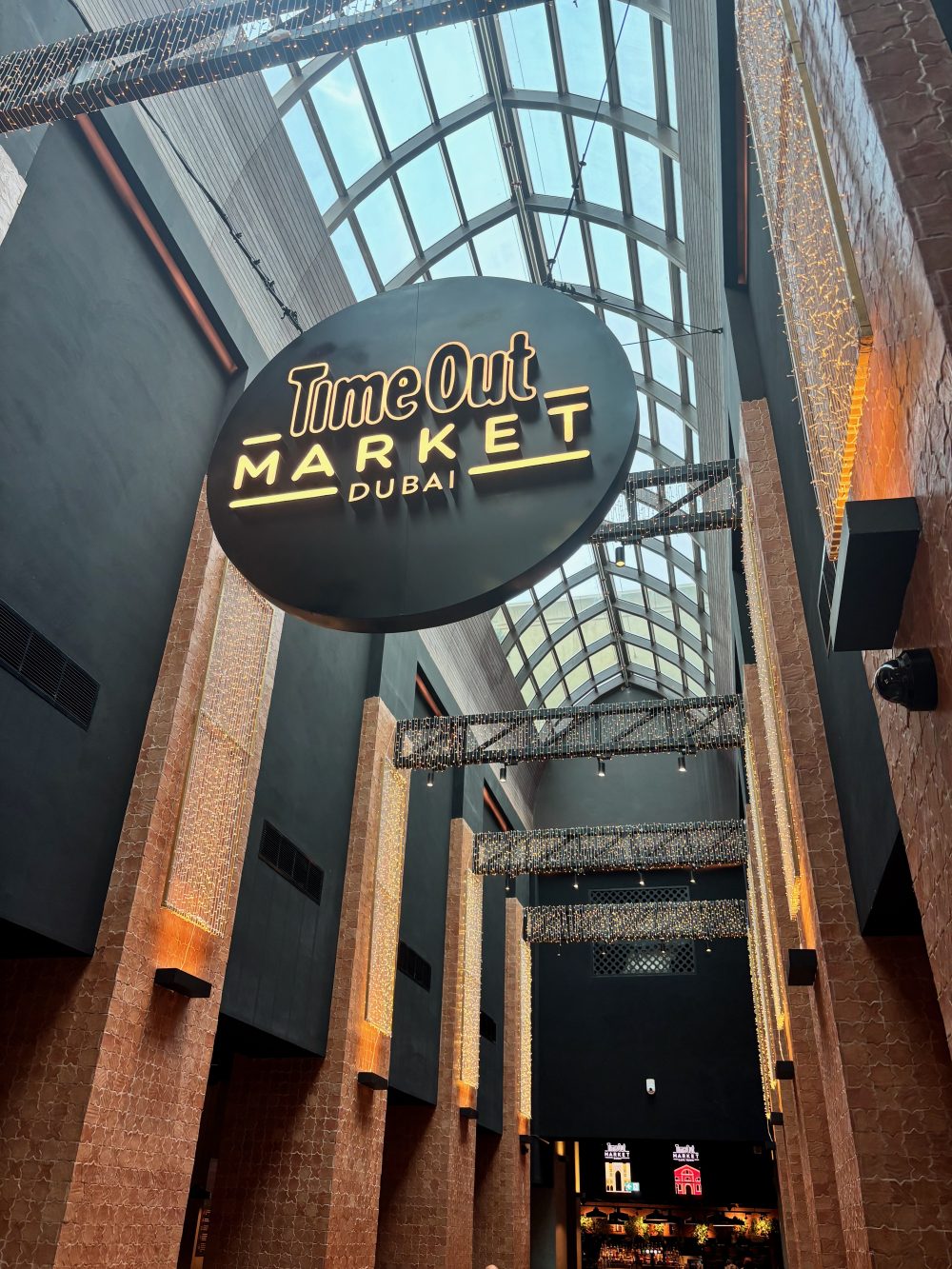

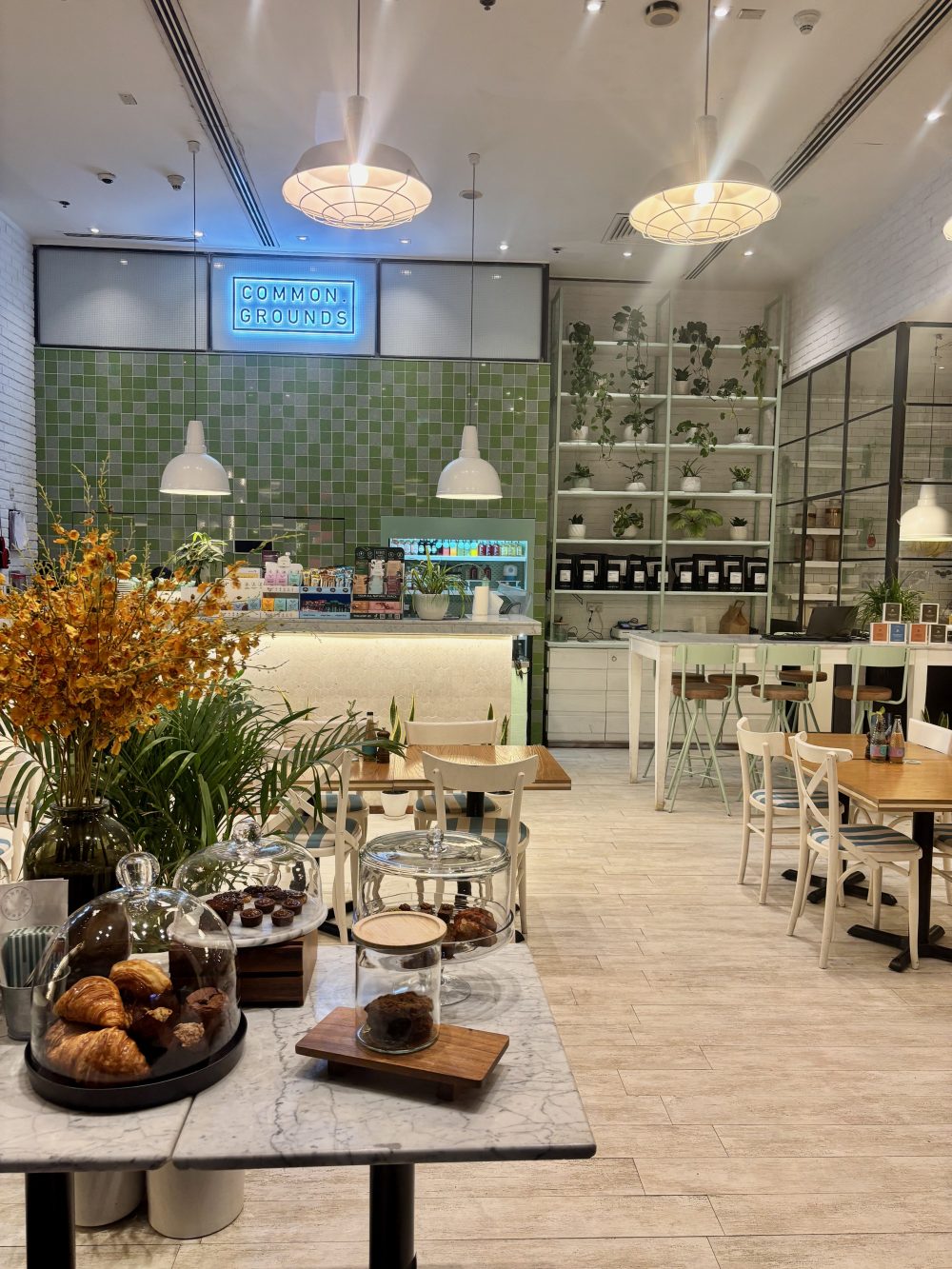
Outdoor pursuits in Dubai
For adventurous travellers or those who love sport, Dubai has an endless supply of opportunities. From sand boarding down a 300ft sand dune and camping in the desert to deep-sea fishing and kite surfing on the Arabian Gulf. You can skydive above Palm Jumeirah or learn to play polo while riding a camel. Hatta, located in the Hajar Mountains offers excellent hiking, mountain biking, or kayaking, or back in the heart of the city, there are ample padel courts or bike lanes for leisurely bike rides.
Key Areas/Neighbourhoods in Dubai
Old Dubai and Dubai Creek
Exploring along Dubai’s Creek is essential on any length trip to Dubai, and spending time here is vital to truly understand Dubai’s Arabian roots. The area, which just a few decades ago was a humble fishing village, is now teeming with historical treasures, museums and heritage areas that can take you on a journey into the past.
The air is lifted with the aroma of exotic spices, herbs and oud, and the sounds of the Imam’s call to prayer reverberates through the area. There is a strong commitment to local heritage and preserving the traditional way of life in Dubai Creek, so it’s really well worth exploring for a day.
A great way to explore this area is to join a local tour, such as one of the following:
- Authentic Old Town, Souks, Tastings & Abra Boat Tour (from £29 per person)
- Old Dubai Historic Guided Tour: Creek, Street Food & Souks (from £12 per person)
- Half-Day City Tour with Blue Mosque, Creek, and Souks (from £39 per person)
It’s worth noting that if you’re in Dubai in May, you can witness Dubai’s biggest sailing event, the annual Al Gaffal Dhow Race – a tribute to Dubai’s pearl-diving and seafaring heritage.

Best Things to Do
Al Fahidi Historical Neighbourhood
This neighbourhood dates back to the end of the 19th century and is where Dubai’s first wealthy traders settled.
Their homes and stores have now been carefully restored and now feature art galleries, boutique stores, museums and cafés. A wonderful afternoon can be spent exploring the pedestrianised lanes.
Located here is the fascinating Dubai Museum and the Al Fahidi Fort, dating back to 1799. This is the place to visit to understand life in Dubai, long before the discovery of oil in 1966. In fact, there are even old Stone Age artefacts from the area’s early beginnings. Also in the area are the Bait Al Banat Women’s Museum and the Pearl Museum, as well as the Saruq Al-Hadid Archaeological Museum which is home to dozens of Iron Age artefacts.
Nearby is the Sheikh Mohammed Centre for Cultural Understanding (SMCCU), which was opened to to help visitors further understand the local culture, its history and its people. The SMCCU also provides a unique opportunity for visitors to interact with local Emiratis and join them in a traditional meal.
One cafe to definitely consider eating in is the Arabian Tea House which takes you back in time. The food here is great and you can enjoy its leafy, shaded courtyard too.
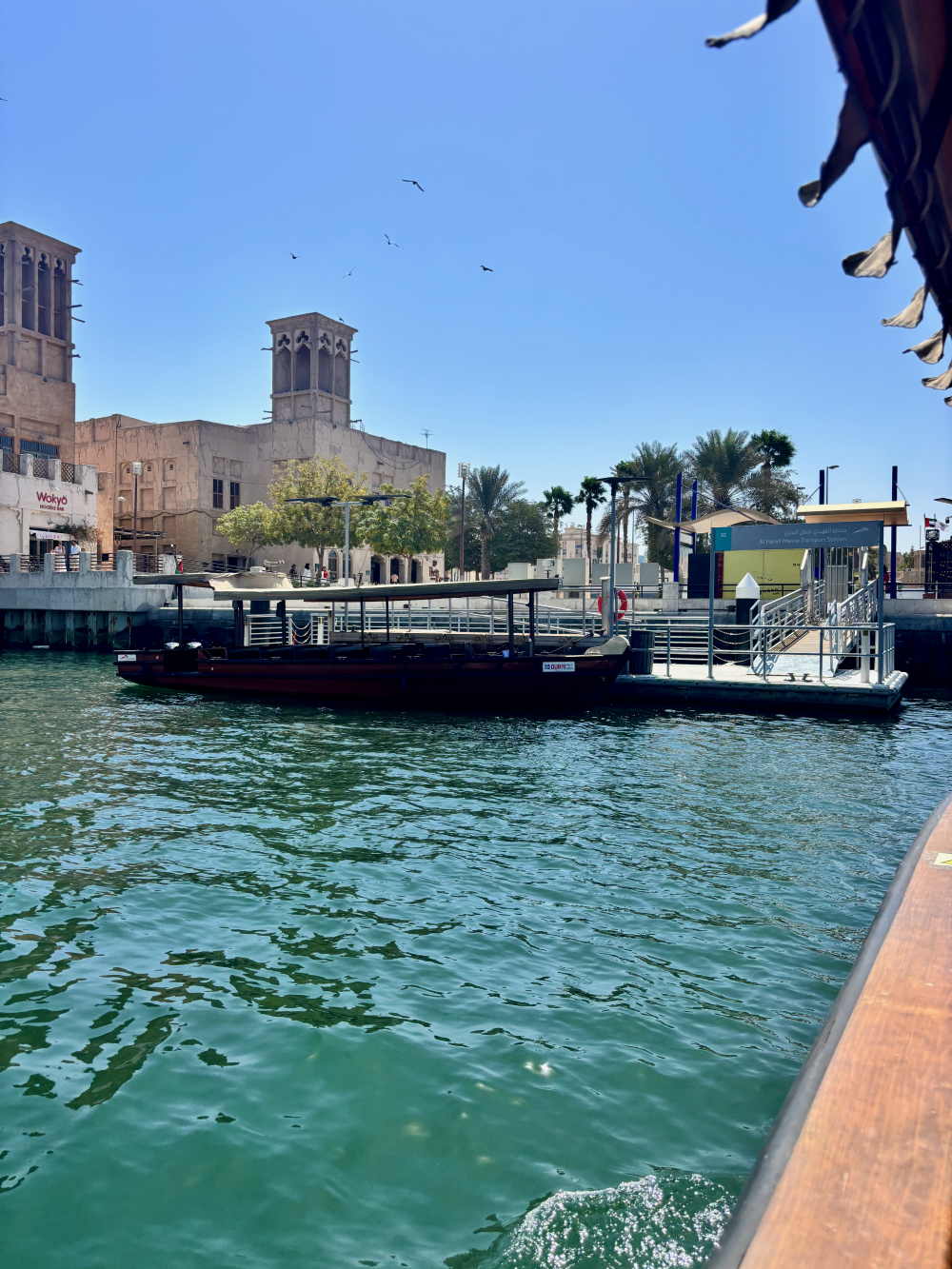

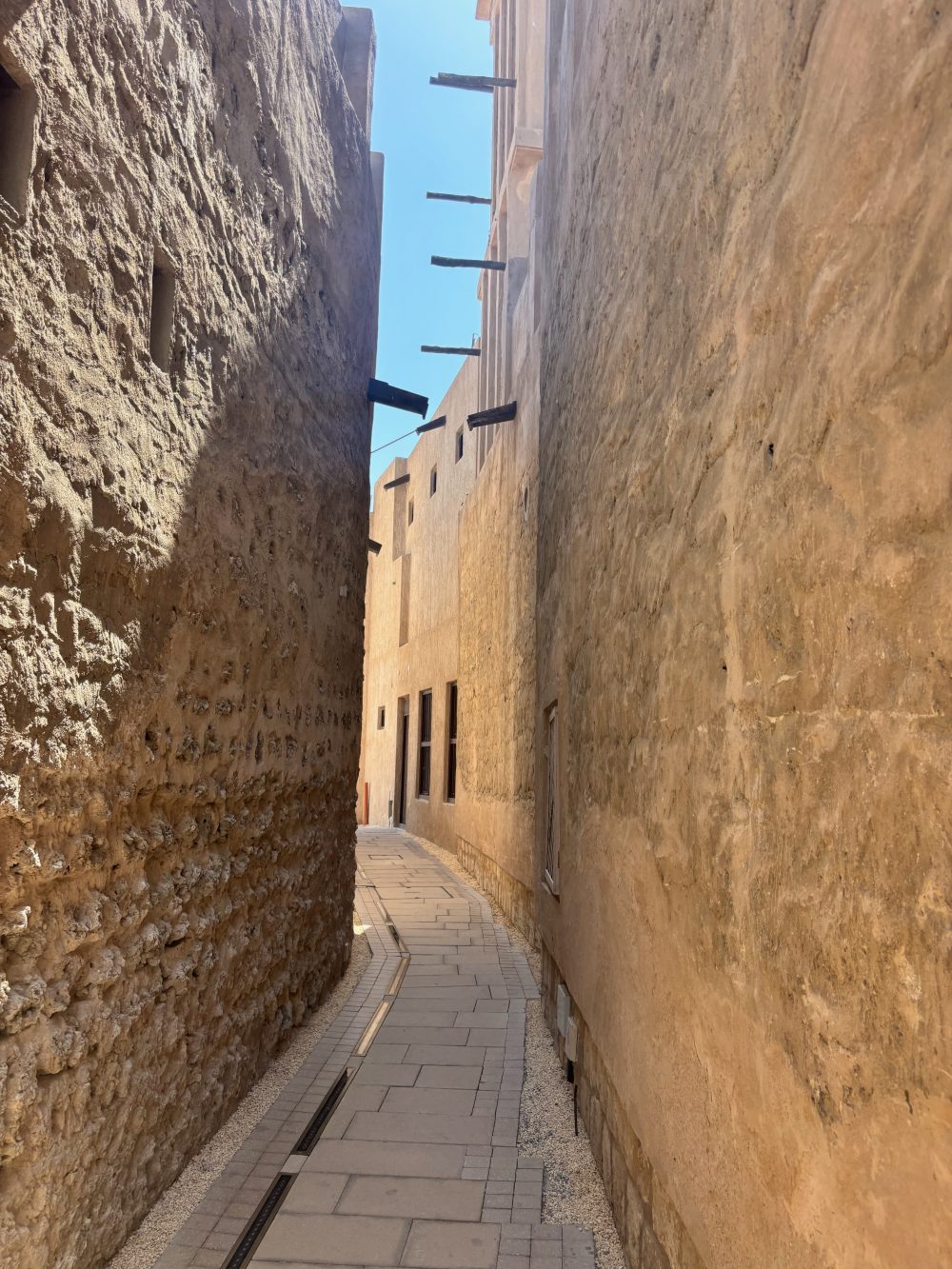
Al Shindagha
This area is home to the Al Shindagha Museum which guides visitors through the Dubai’s dramatic development over centuries with a curated state-of-the-art multimedia experience. Visitors can gain an insight into what life was like for traditional Emiratis to raise a family by the water, and how sea trade affected their livelihoods.
Probably the most famous of all of Dubai’s wind tower houses is located further along the Creek at Al Shindagha. As the former home of Sheikh Saeed Al Maktoum, Ruler of Dubai from 1912 to 1958, the building is where Dubai’s current ruler, Sheikh Mohammed Bin Rashid Al Maktoum, played in the yard as a young boy.
Al Seef
Al Seef is an old neighbourhood that has been transformed into a new cultural hub, specifically for showcasing the areas Bedouin roots and traditions. It is a popular area, now hosting home-grown F&B concepts and excellent restaurants along its waterside promenade. The area also hosts a busy calendar of activities and events, particularly in the months between October and March.
One of the most well known restaurants here is Al Fanar Seafood Market.
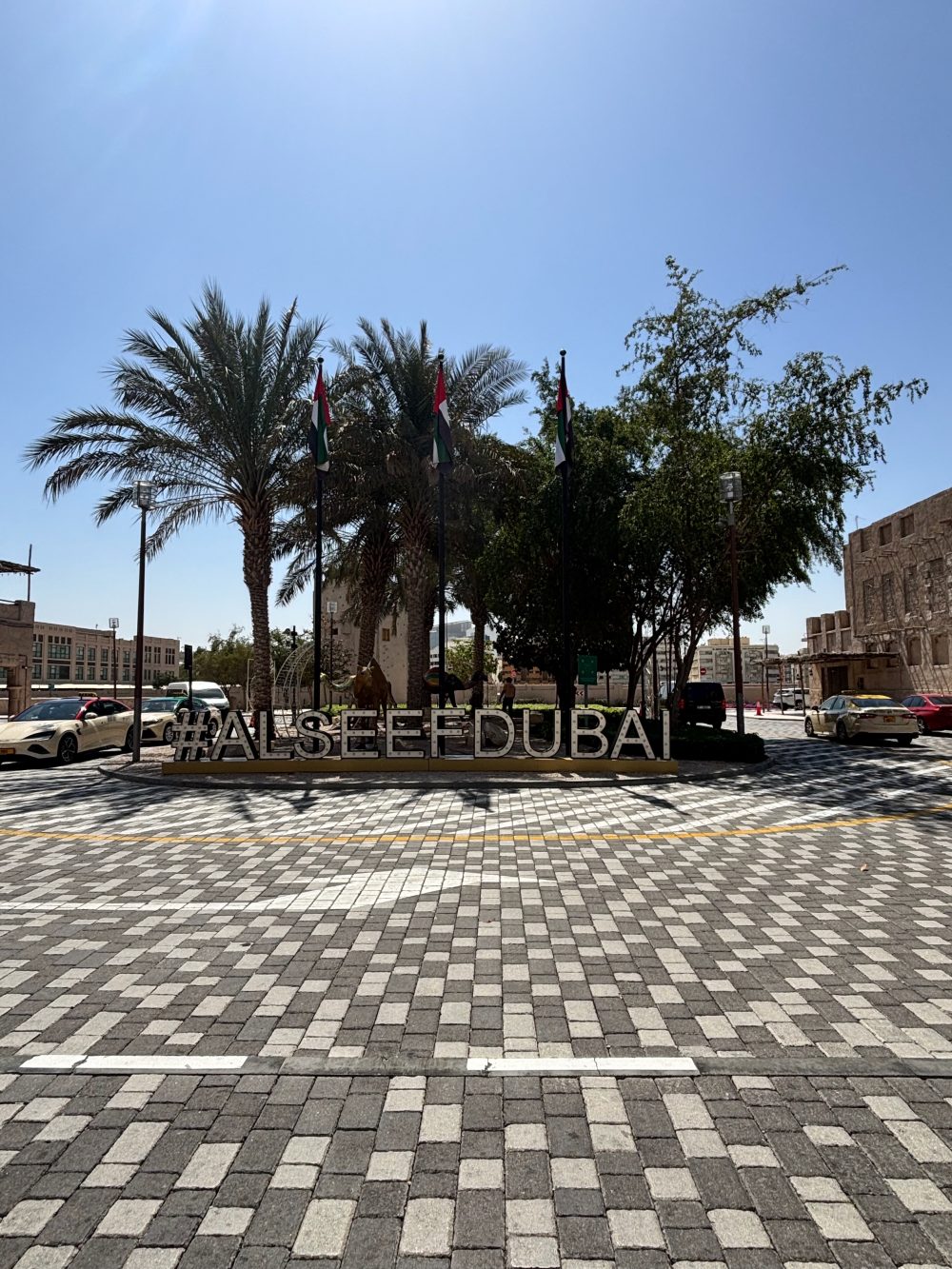
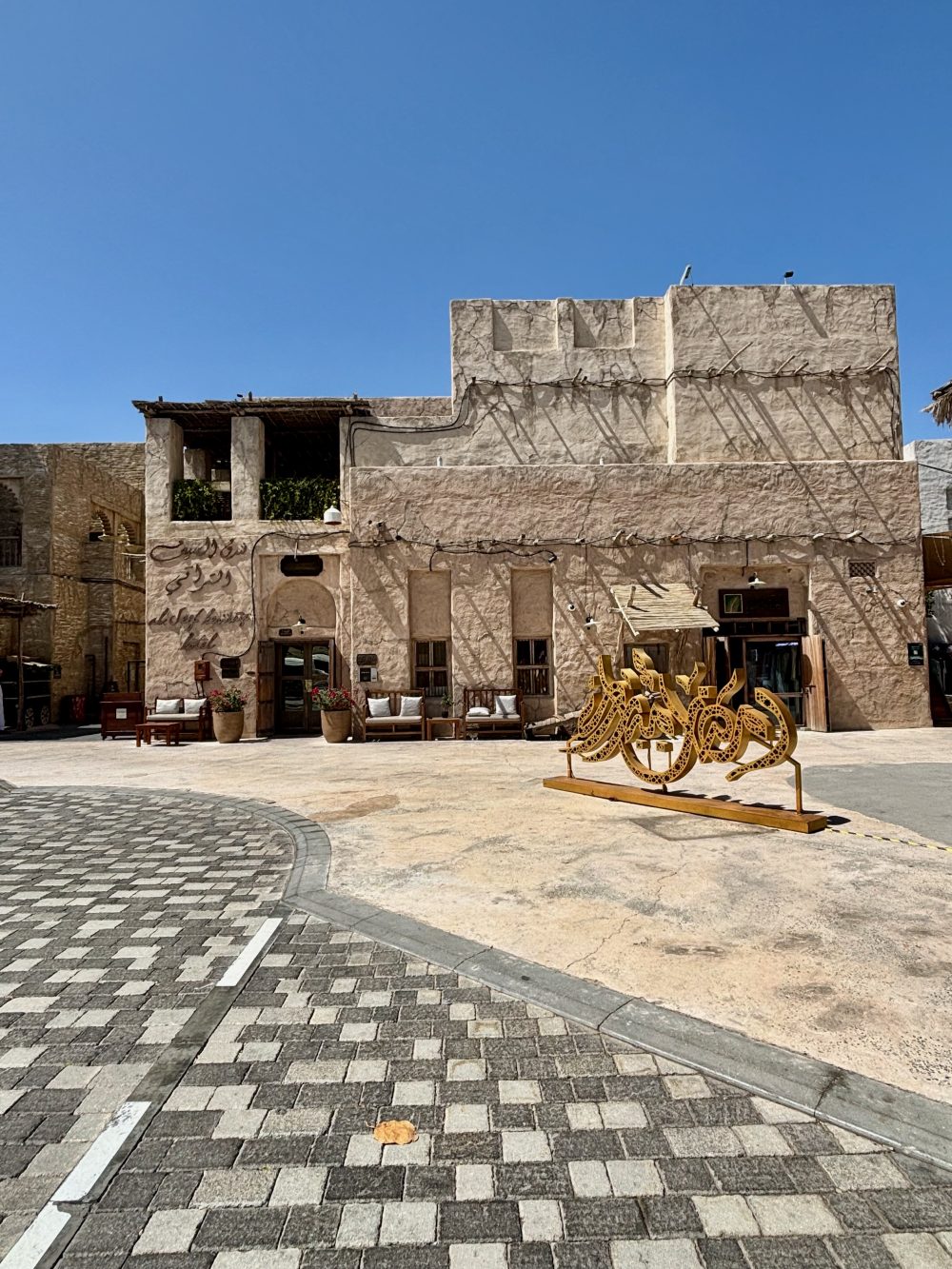
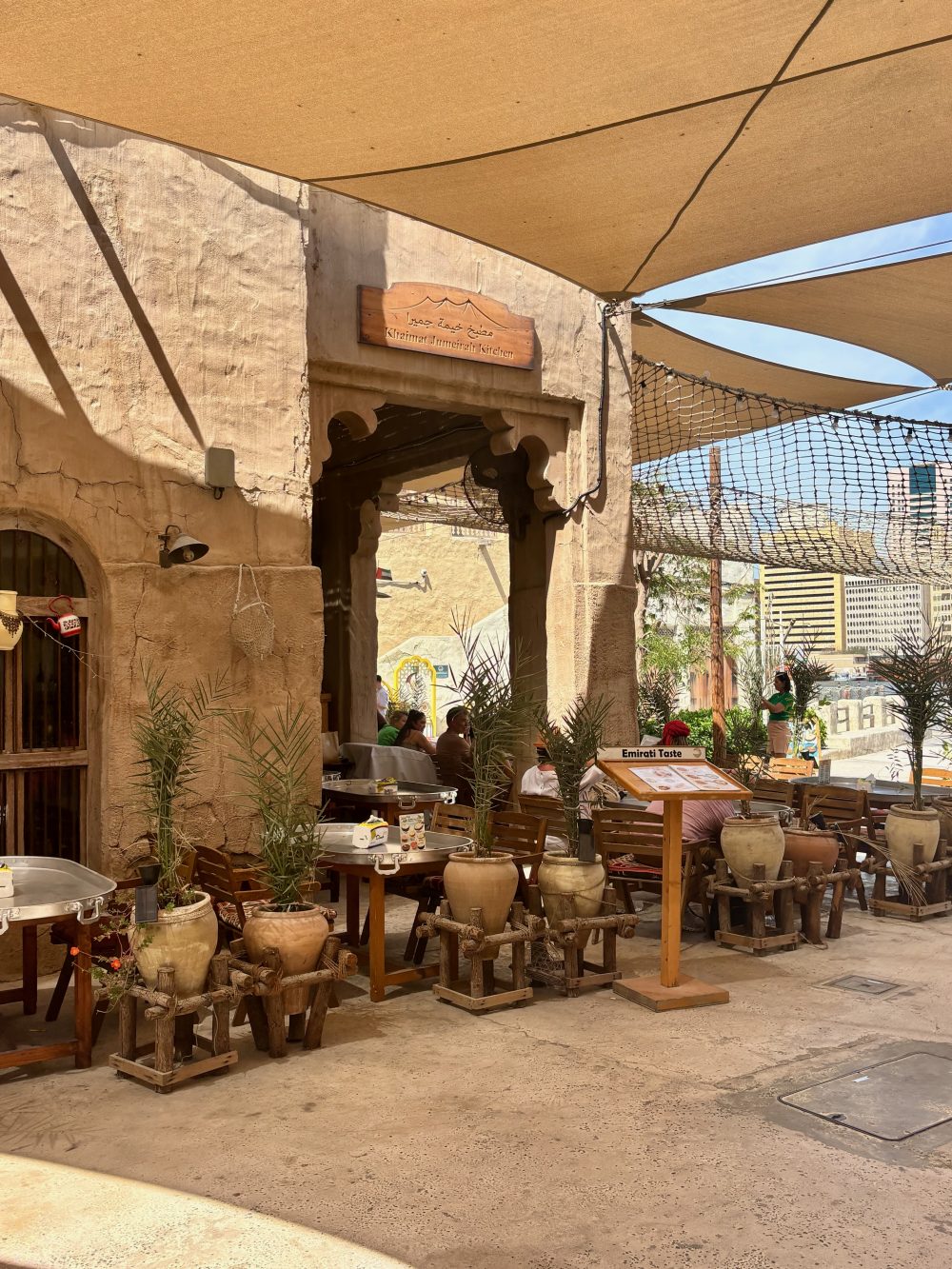
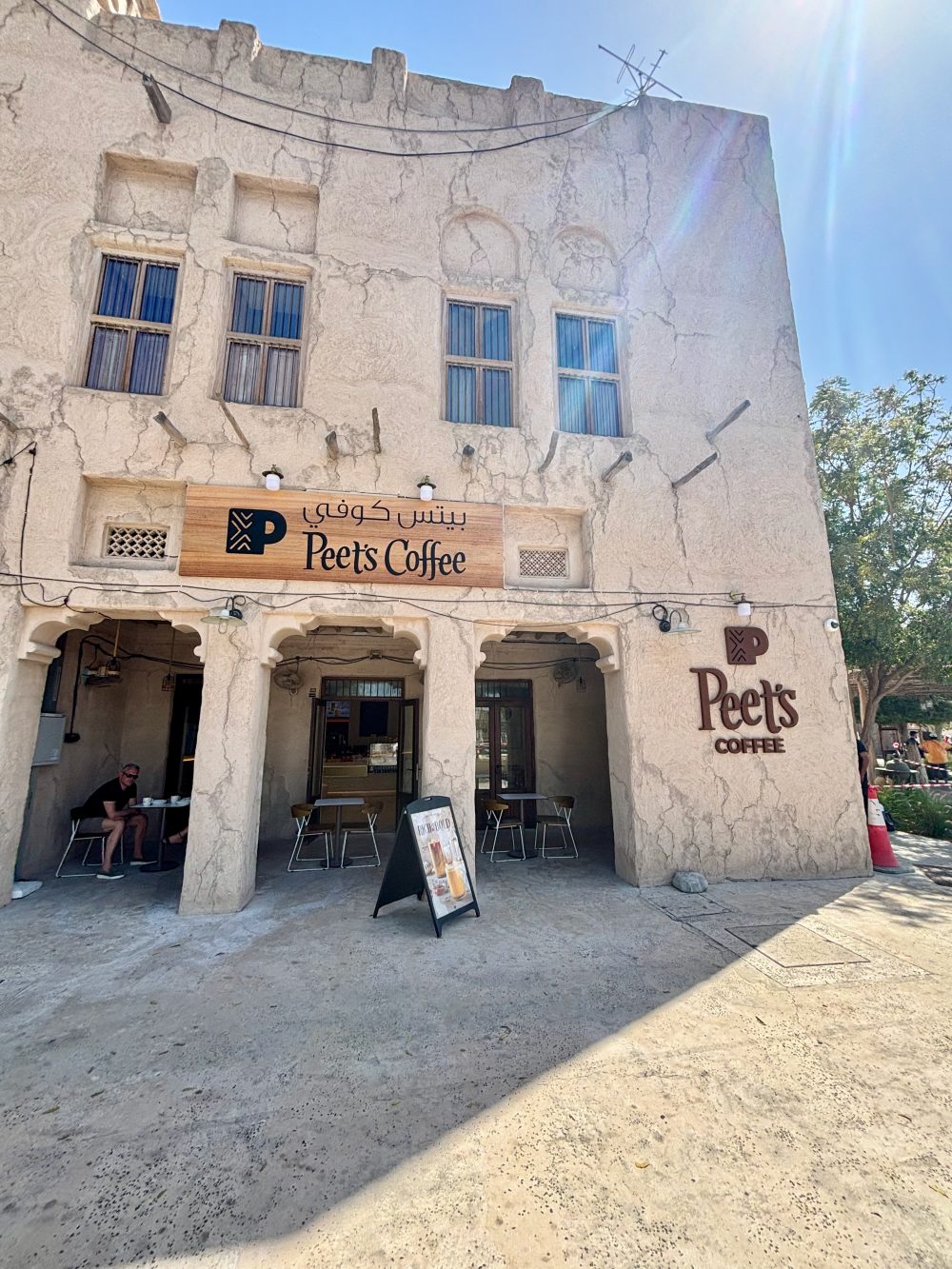

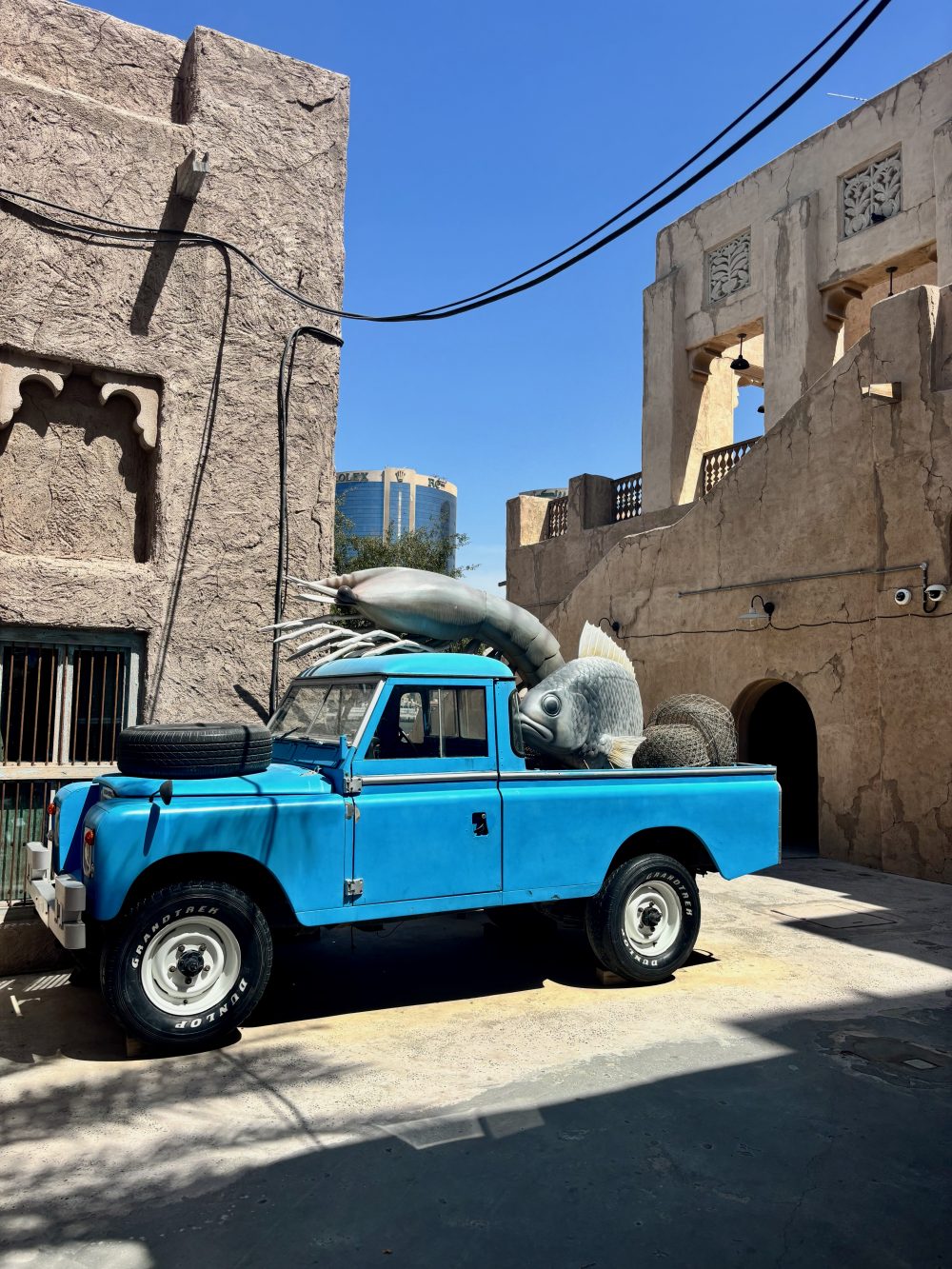
Bur Dubai and Deira
Also along the shores of the Creek are Dubai’s renowned souqs. The earliest traders of the city would pass through on their way to sell gold, spices and textiles – all of which can be found in the local souqs even today. Make sure to visit these exciting markets to practice your barter skills for a range of goods, such as cushion covers and throws in the Textile Souq, or perhaps the fragrant aromas of saffron and frankincense in the Spice Souq, or glittering jewellery in the Gold Souq. You can hop between these souqs each side of the Dubai Creek by local boat, called an abra.
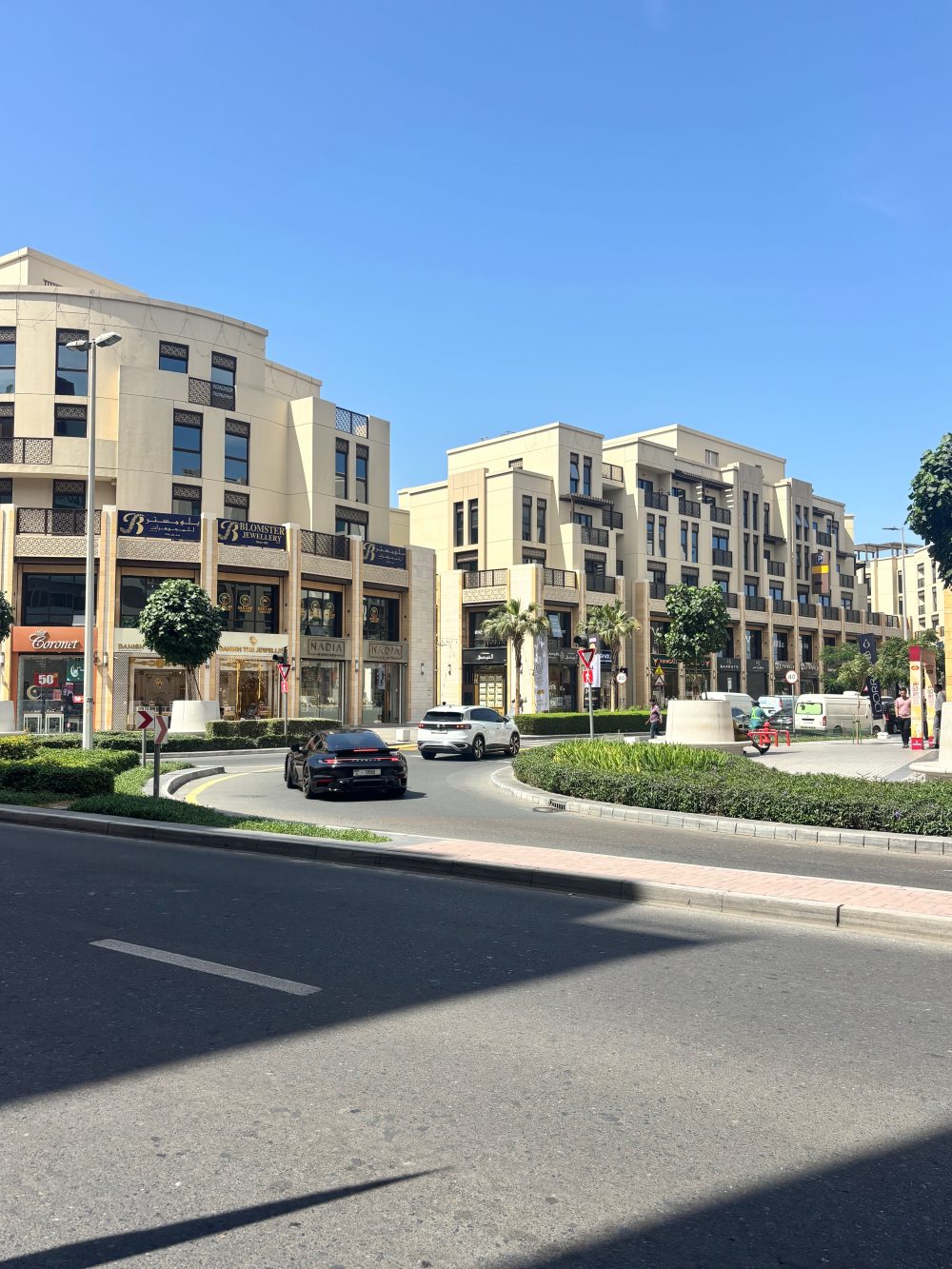


Where to Stay
Some really great hotel brands are popping up around Al Seef and Al Fahidi, often restoring old homes in the neighbourhood into tasteful, hotel buildings. Some of the best options include:
- Al Seef Heritage Hotel Dubai, Curio Collection by Hilton (around £258 per night)
- Canopy by Hilton Dubai Al Seef (around £221 per night)
- Hampton by Hilton Dubai Al Seef (around £122 per night)
- XVA Art Hotel (around £154 per night)
- Mazmi Casa (around £300 per night)
Staying at any of the above means your nearest metro station would Sharaf DG.
Alternatively, you can stay on the other side of the Creek in Deira. Here there is a Sheraton and a Radisson Blu directly on the water. They’re slightly older hotels, but can provide a good base for exploring this part of Dubai.
- Radisson Blu Hotel, Dubai Deira Creek (around £206 per night)
- Sheraton Dubai Creek Hotel & Towers (around £200 per night)
The nearest Metro station for both of these hotels is Union.

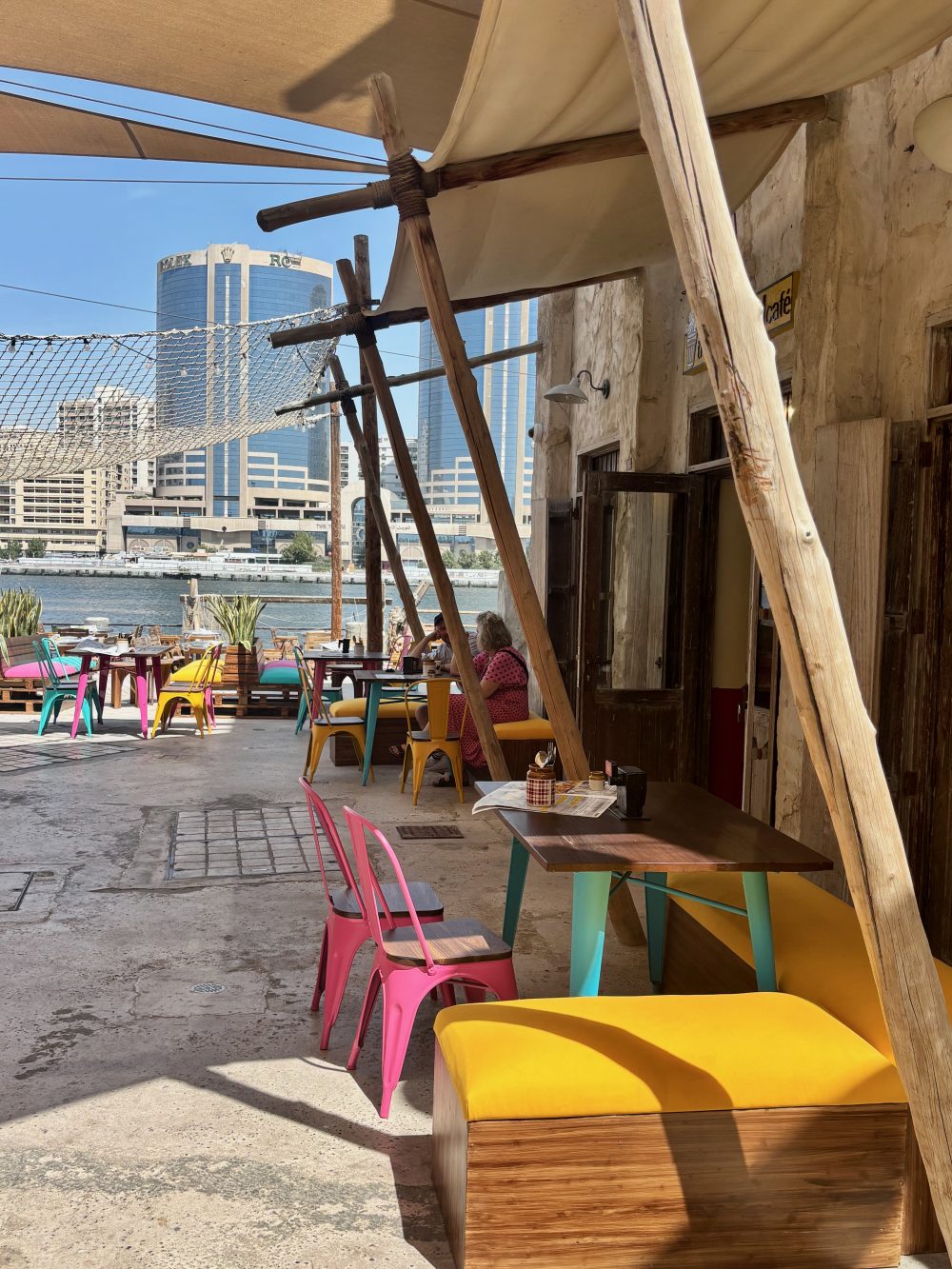

Umm Suqeim, Jumeirah and Kite Beach
These neighbourhoods are renowned for their coastline views of iconic Burj Al Arab, often considered the world’s most luxurious hotel. These areas are a mix of residential and commercial, and are adjacent to each other as you work your way along the coast.
The extensive free beach stretches across all these areas and is backed with tracks for cycling, running and walking. A beautiful afternoon can be spent here, meandering the length of this area and stopping at lively cafes for coffees, smoothies and snacks.
A block behind is the Jumeirah Beach Road, which also stretches the length of this area. This is a busy commercial hub for locals, it is also home to plenty of much-loved cafes as well as day spas and shops.
If you’re feeling energetic, you can walk, run or cycle from just by Marsa Al Arab all the way to J1 Beach.
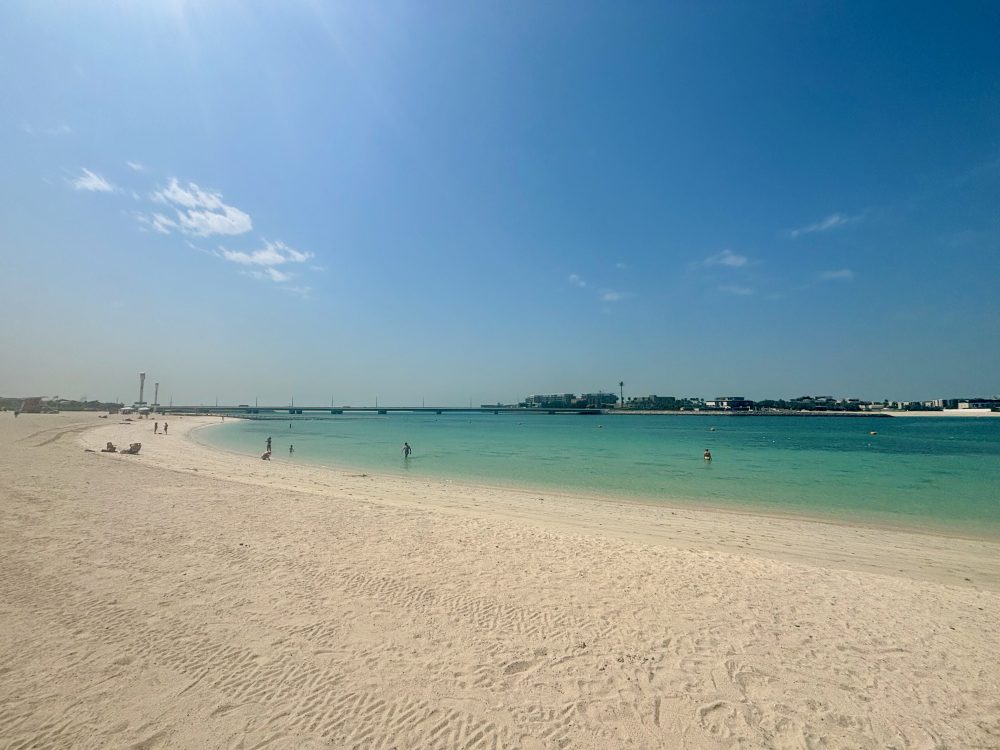
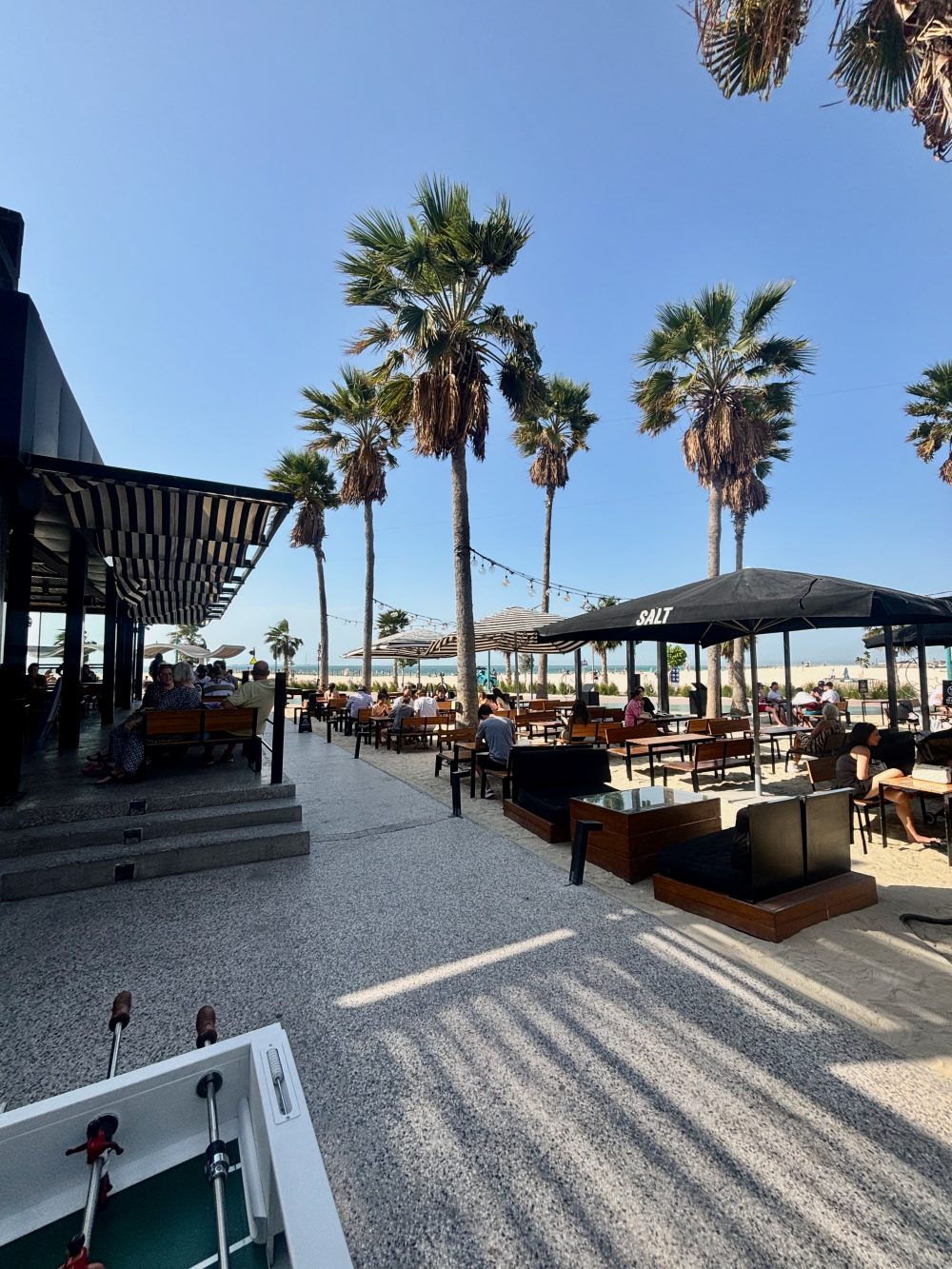
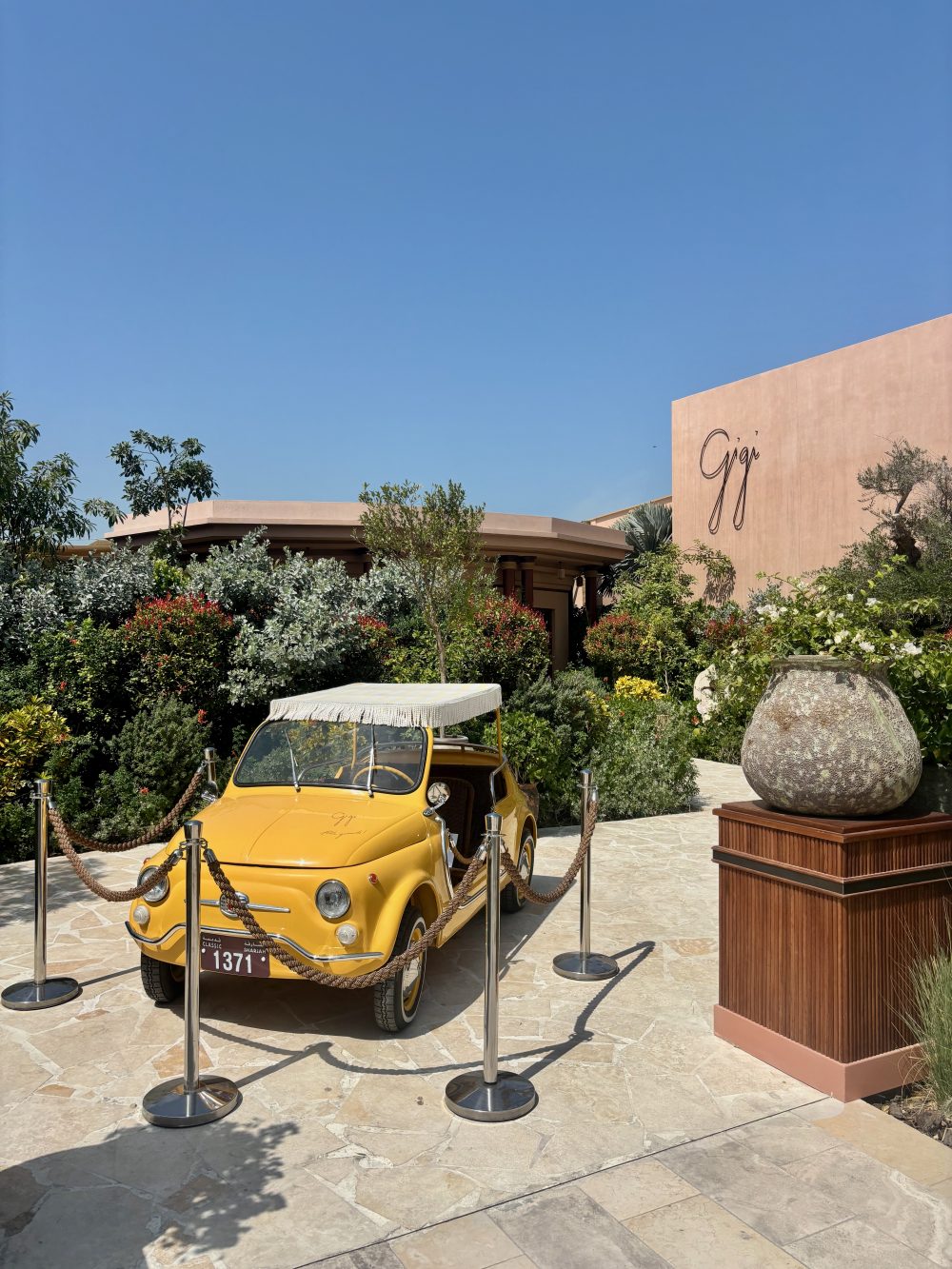
Umm Suqeim
This area is one of the most popular in Dubai, partly because it is home to some of the most famous hotels in the Middle East, including of course the Burj Al Arab. Next door is the famous Jumeirah Beach Hotel, one of the first luxury family hotels to open in Dubai. Most recently, Jumeirah Marsa Al Arab opened (in March 2025), which has continued to add to the development of the exclusive beachfront area.
On the other side is the stunning Madinat Jumeirah complex. Home to several luxury hotels, beach clubs and excellent shopping connected between lots of waterways and bridges, this Arabian-inspired development is a must-visit.
Umm Suqeim is all about the beach, and there are so many water-based activities to enjoy around here. Another popular attraction is the Wild Wadi Waterpark, which is a lot of fun and well worth a visit!
And if you head a block or two back from the beach, you’ll find pretty residential areas with white washed villas and tumbling bougainvillea.
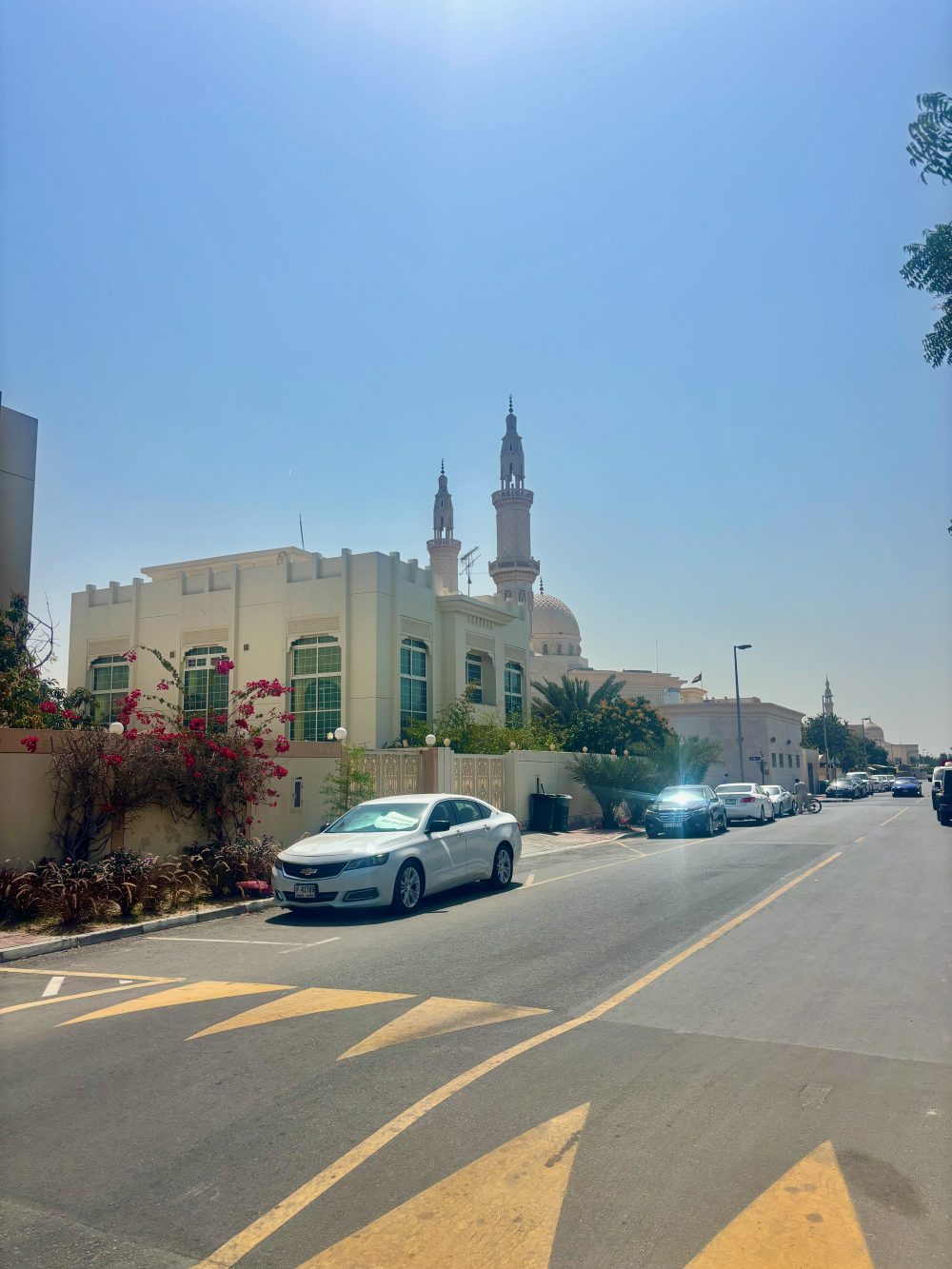

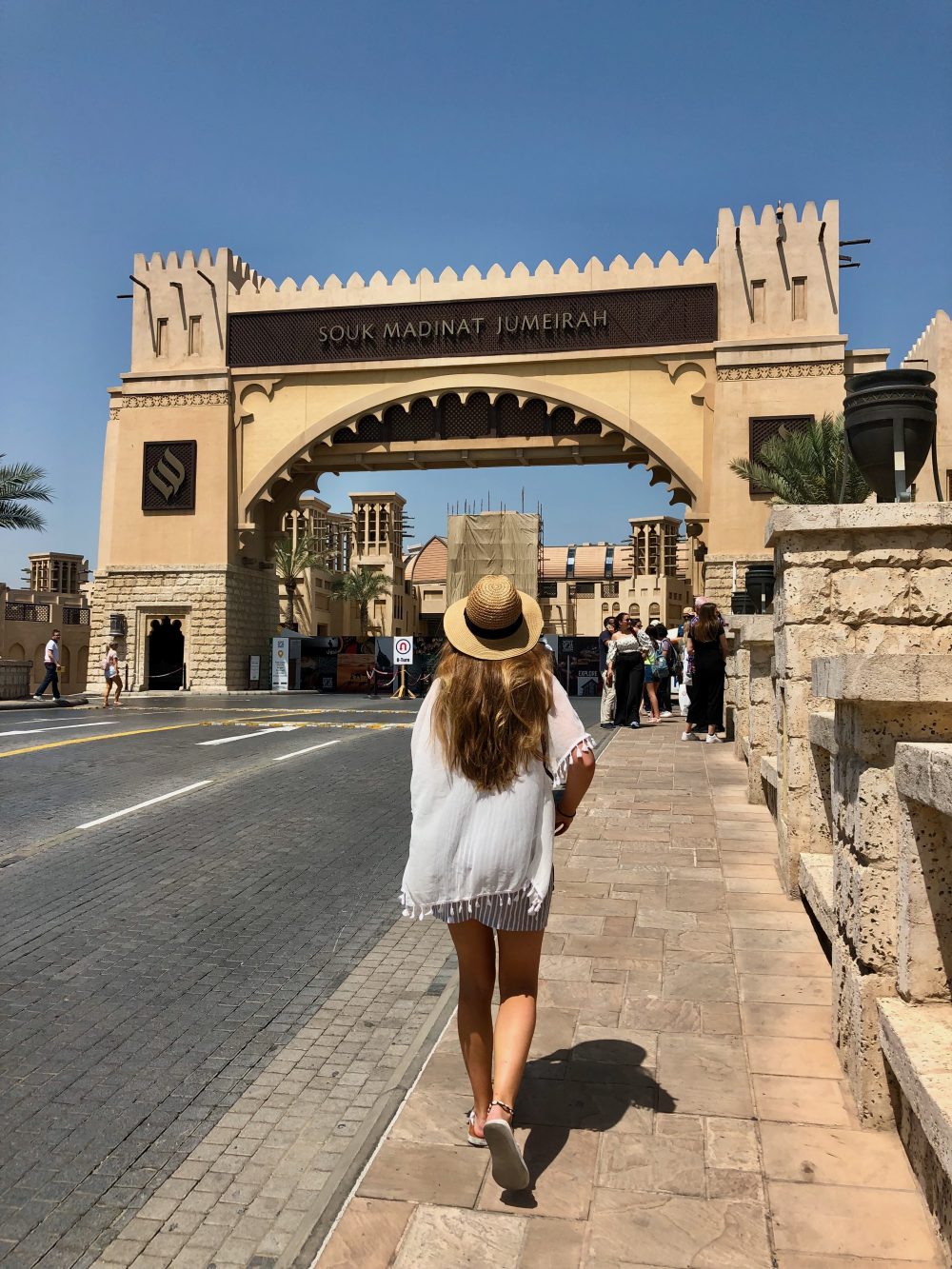
Kite Beach
Just along the coast is Kite Beach, named after the many kite surfers that visit every day to enjoy the excellent conditions. Rush here for a spot of beach volleyball or try your balance at stand-up paddle-boarding and kayaking. The beach hosts plenty of non-aqua activities too, including a skatepark, an outdoor trampoline and a kid-friendly areas. There are so many beachside areas here, including SALT, a popular burger bar, serving up some of the best in the city.
The main things to do in Kite Beach is all about the beach and all the water activities. This area is much loved by locals and tourists alike, and at sunset, you can really enjoy a lively atmosphere as people come down in droves.
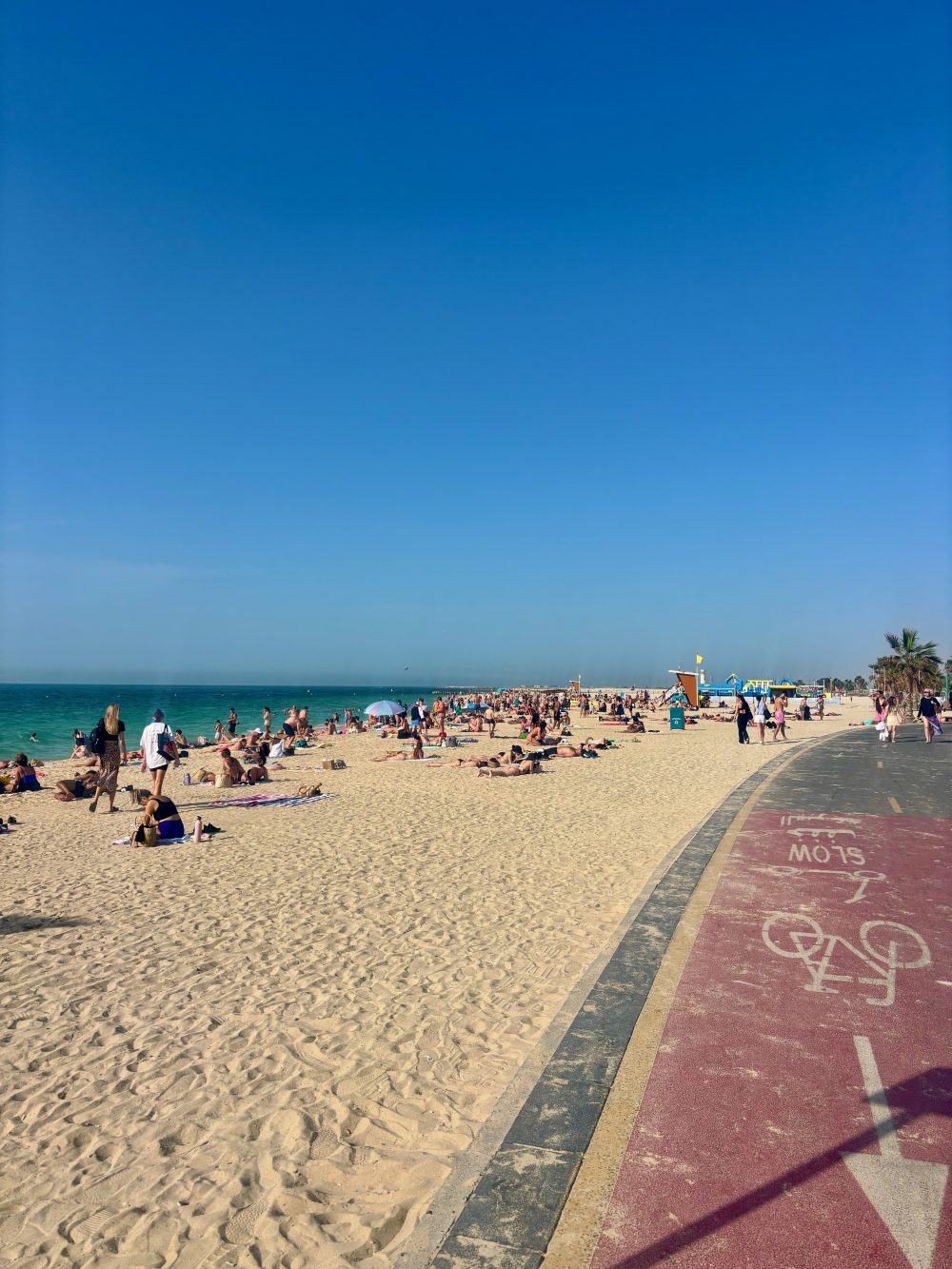
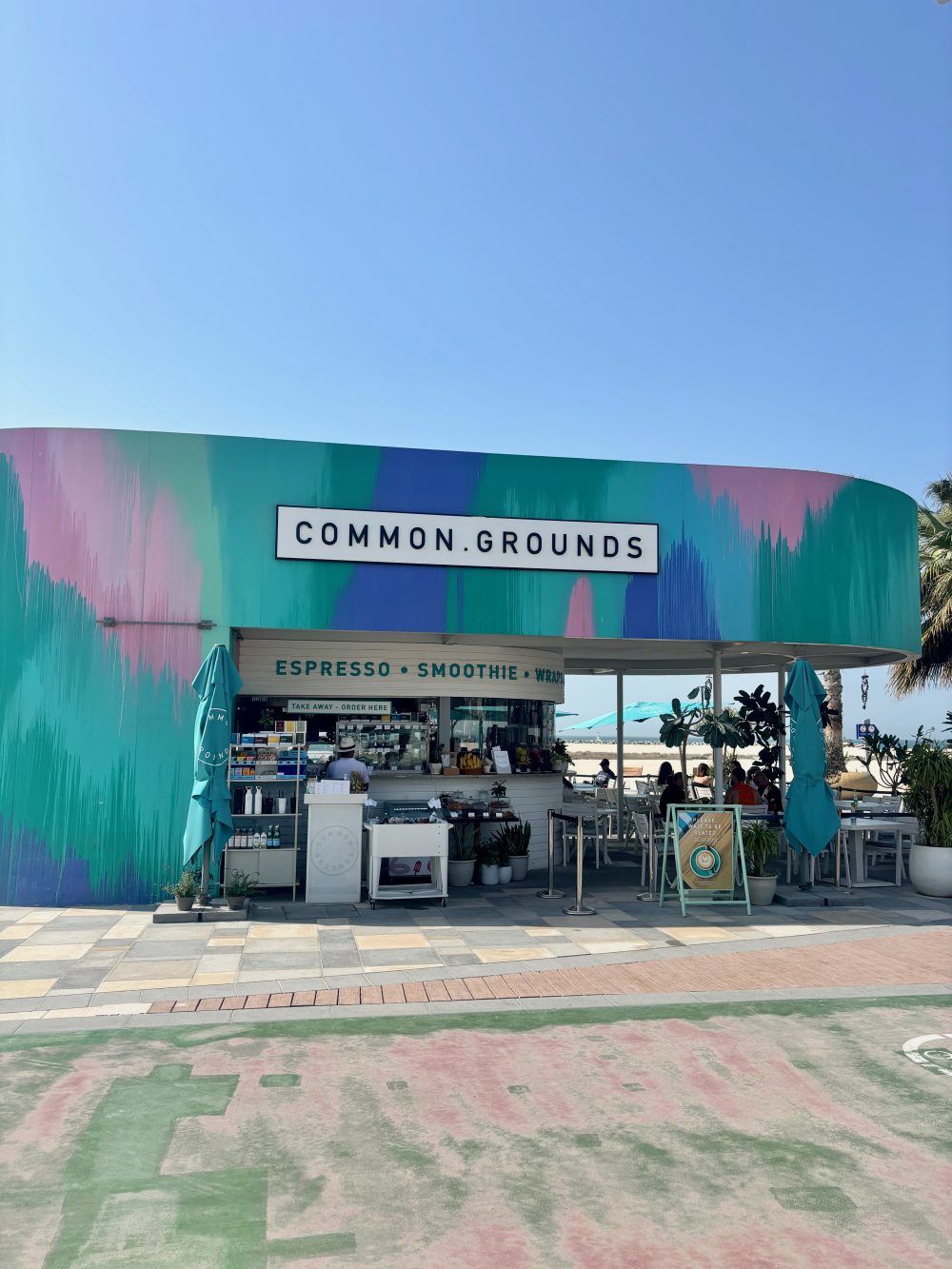
Jumeirah
Along from Kite Beach is Jumeirah, a leafy suburb home to a number of luxury hotels. It is also the site of developments such as J1 Beach (previously known as La Mer). Fortunately, there is a fantastic public beach here (called Jumeirah Public Beach), so you can enjoy the gorgeous water without having to stay at one of the luxury hotels.
Cultural attractions in this area include the Etihad Museum and the Jumeirah Mosque, which is open for non-Muslims to visit. The Etihad Museum is a very modern attraction. But it is in fact the very spot where the UAE was founded in 1971!

Where to Stay
There is no shortage of places to stay in this area, and some of the best hotels in Dubai are located here. I’ve included a variety to cover all price points:
Luxury:
- Jumeirah Burj Al Arab (from around £920 per night)
- Jumeirah Marsa Al Arab (from around £620 per night)
- Mandarin Oriental Jumeirah (from around £460 per night)
- Four Seasons Resort at Jumeirah Beach (from around £420 per night)
Mid-range:
- Jumeirah Al Naseem (from around £315 per night)
- Jumeirah Beach Hotel (from around £280 per night)
- Jumeirah Al Qasr (from around £252 per night)
- Jumeirah Mina Al Salam (from around £220 per night)
Affordable:
- Hyatt Centric Jumeirah (from around £100 per night)
- Rove La Mer (from around £65 per night)
Do note that all of the above prices increase quite substantially in Dubai’s high season (October to April).
Business Bay and Downtown Dubai
Downtown Dubai
Pretty much any tourist coming to Dubai for a long weekend will find themselves in Downtown Dubai, even if just for a few hours. And that’s because it’s home to one of the most buildings in the world – the Burj Khalifa, as well as the world’s largest shopping mall.
The Burj Khalifa opened in 2010, and is still the world’s tallest building today! The tower stretches 828m into the sky and I’m always in awe every time I see it!
You can actually go up to some of its highest levels! Arrange your tickets here:
- Burj Khalifa Lake Ride and Fountain Show (from £14 per person)
- Burj Khalifa Levels 124 & 125 Entry Ticket + Options (from £33 per person)
- Aquarium & Burj Khalifa Levels 124 & 125 Combo Ticket (from £64 per person)
- Burj Khalifa: Level 124, 125 & The Burj Club 3-Course Meal (from £69 per person)
Another famous piece of architecture is the nearby Dubai Frame. It was actually the result of a competition, where participants were invited to send in proposals for a new structure to promote ‘a new face for Dubai’. The building consists of two 150m high towers connected by a 93m glass bridge at the top. There’s a museum on the ground floor but it’s well worth visiting the Frame for the views!
- Purchase your entry ticket to the Dubai Frame with Deck Access here (£11 per person)
The Dubai Mall opened in 2008 and is the most-visited building on the planet, with over 105 million visitors a year! It has over 1,200 shops spread and over 120 restaurants and cafes. It absolutely huge, and can take hours to wander. In fact, I don’t think I’ve even seen half of the mall, despite having visited more than 10 times. More recently a brilliant China Town experience opened inside the Dubai Mall, but there is also an Olympic-sized ice skating rink, a 22 screen cinema and a huge Aquarium.
Outside the mall is a beautiful area dedicated to providing viewpoints of the incredible Burj Khalifa and the Dubai Fountain. Here you will find dozens of restaurants with beautiful outside seating, as well as the excellent Time Out Market.
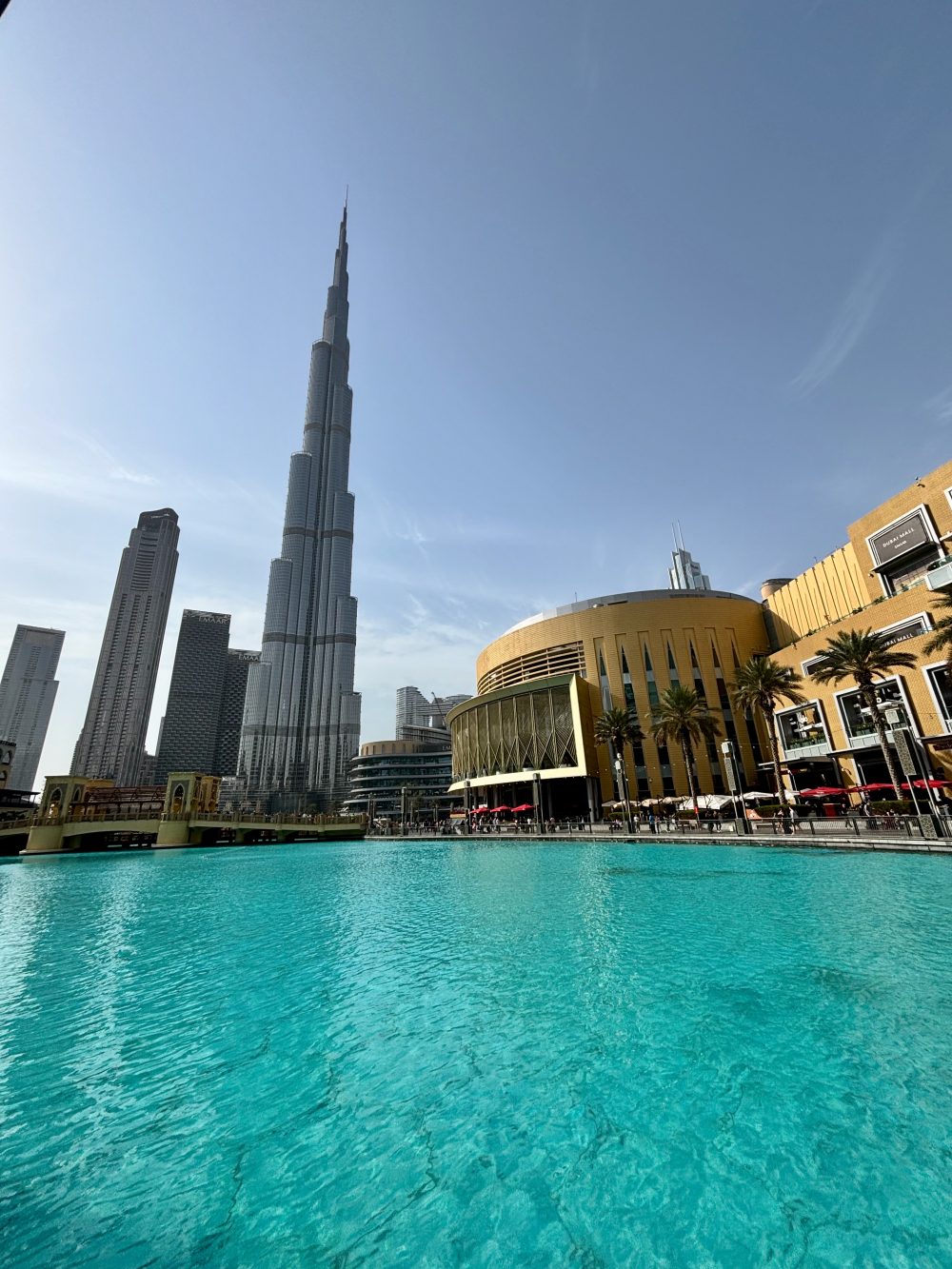
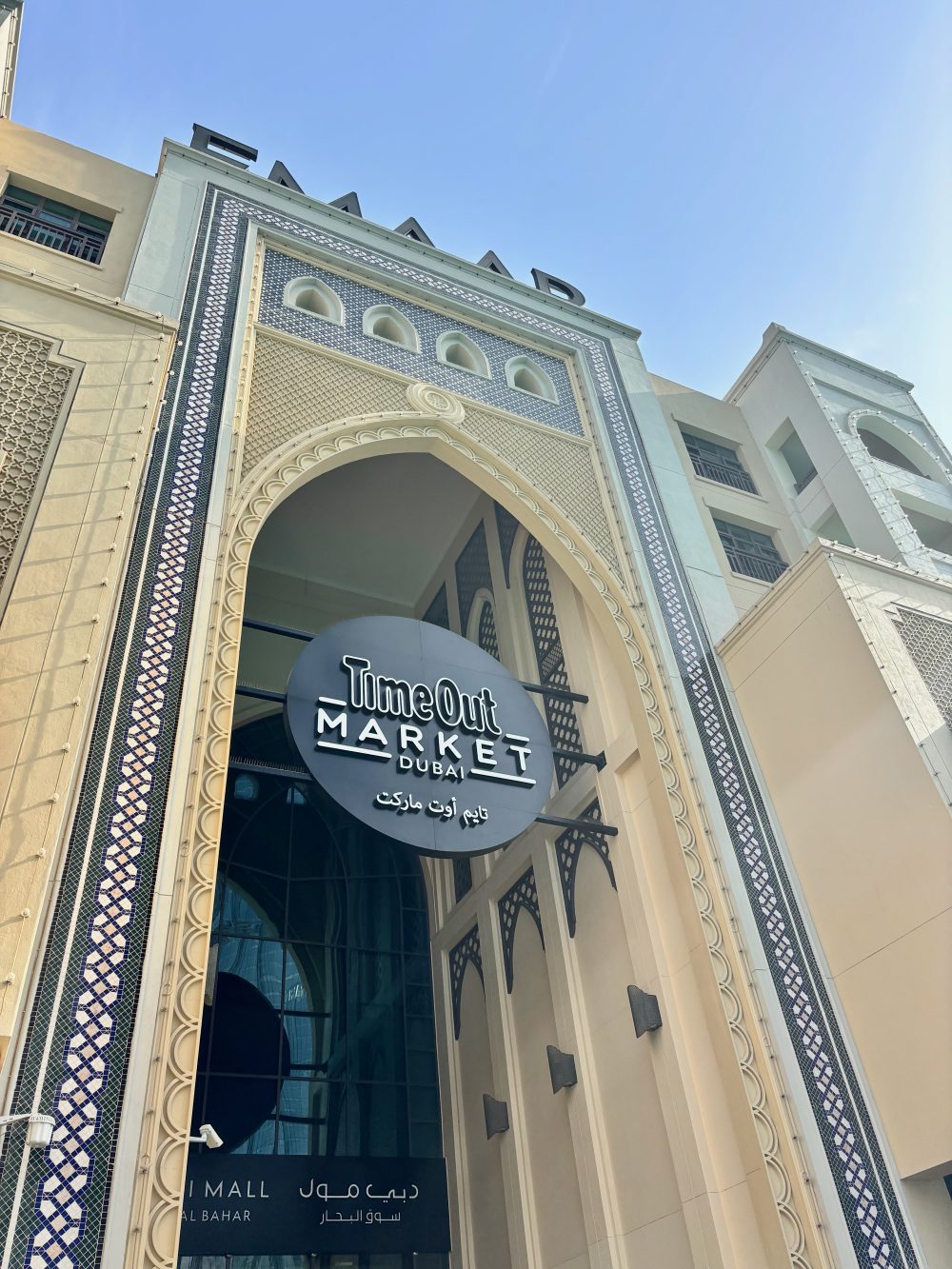
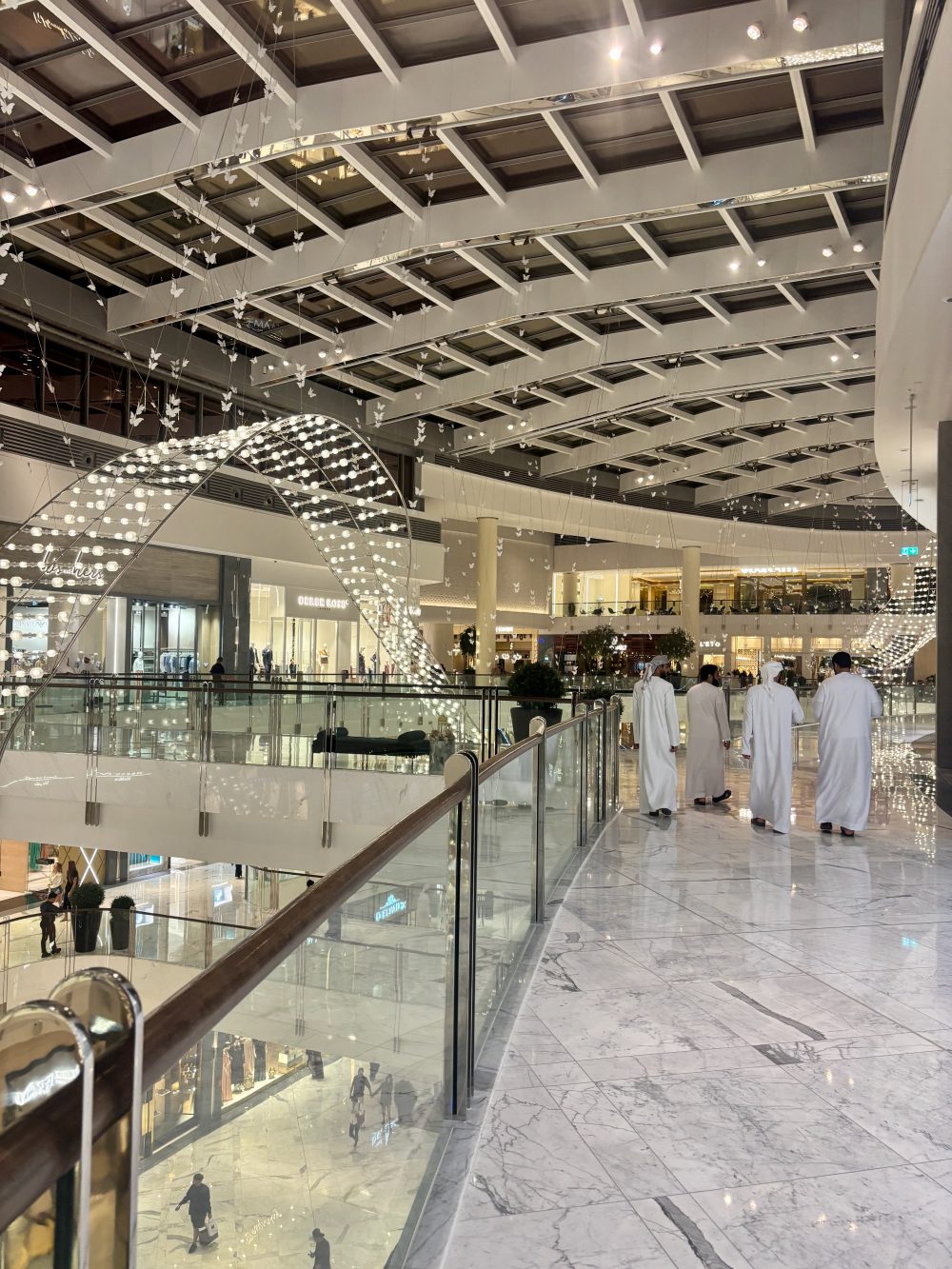
City Walk
Nearby is City Walk, a fairly new urban district packed with shops, restaurants, cinemas, and plenty of entertainment such as escape rooms and family-friendly activities. It is actually walkable from the Burj Khalifa Metro stop. You need to go past the soon-to-open Mandarin Oriental and then the Rove City Walk Hotel, but the route isn’t super obvious. This lifestyle destination is also home to the Dubai’s main concert and sports venue, the Coca Cola Arena.
Although City Walk is open during the day, it gets significantly busier and more vibrant after around 5pm.
Business Bay
This area is home to so much more than just businesses! This district is packed with awesome architecture, world-class hotels, rooftop restaurants and bars, as well as attractions such as La Perle. Inspired by Cirque du Soleil, this is a permanent show inspired by Dubai’s pearl diving heritage.
Nearby is Al Habtoor City, offering some of Dubai’s best dining and some of the city’s most luxurious hotels. Adjacent is the Dubai Water Canal which is emerging into a destination in its own right. As well as plentiful foot and cycle pathways and bridges, the development has transformed this part of Dubai.

Where to Stay
The concentration of hotels in this area is seriously dense. But this also means that some of the most opulent hotel brands are actually more affordable in this area, due to the competition.
You can, for example, stay in the Anantara Downtown for about £145 per night. Or even the One&Only Zabeel, the brand’s first urban resort, for £490 per night. That’s quite a bit steeper than its waterside counterparts!
For more options, here’s my pick of the best stays in Downtown Dubai and Business Bay for all budgets:
Affordable:
- Rove Downtown (from around £82 per night)
- Dusit Thani Dubai (from around £85 per night)
- Four Points by Sheraton (from around £97 per night)
- Swissôtel Al Marooj (from around £99 per night)
- Hilton Al Habtoor City (from around £121 per night)
- Rove City Walk (from around £133 per night)
Mid-range:
- Shangri-La Dubai (from around £145 per night)
- Anantara Downtown (from around £145 per night)
- Al Habtoor Palace (from around £160 per night)
- The Dubai EDITION (from around £290 per night)
- Palace Downtown (from around £378 per night)
Luxury:
- Armani Hotel Dubai, Burj Khalifa (from around £570 per night)
- Address Downtown (From around £590 per night)
Palm Jumeirah
One of the most iconic locations is Dubai is the incredible Palm Jumeirah. This remarkable location stretches out into the Persian Gulf as a huge palm shaped sand island. Its central trunk stretches for 5km, and its expansive crescent is curves around the entire island.
The Palms’ trunk is home to iconic hotels such as FIVE Palm Jumeirah, as well as the brilliant Nakheel Mall and the lively Palm West Beach. The Palm’s fronds are home to luxury homes. At the tip of the crescent is the colossal Atlantis, The Palm. This was also one of the first main sites to be developed on this groundbreaking feat of engineering. And then over the past decade, more and more luxury hotels have been constructed along the crescent, as well as the beautiful Palm Jumeirah Boardwalk.
Each of the fronds is home to some of the most stunning homes around, each with private beach access and incredible amenities.
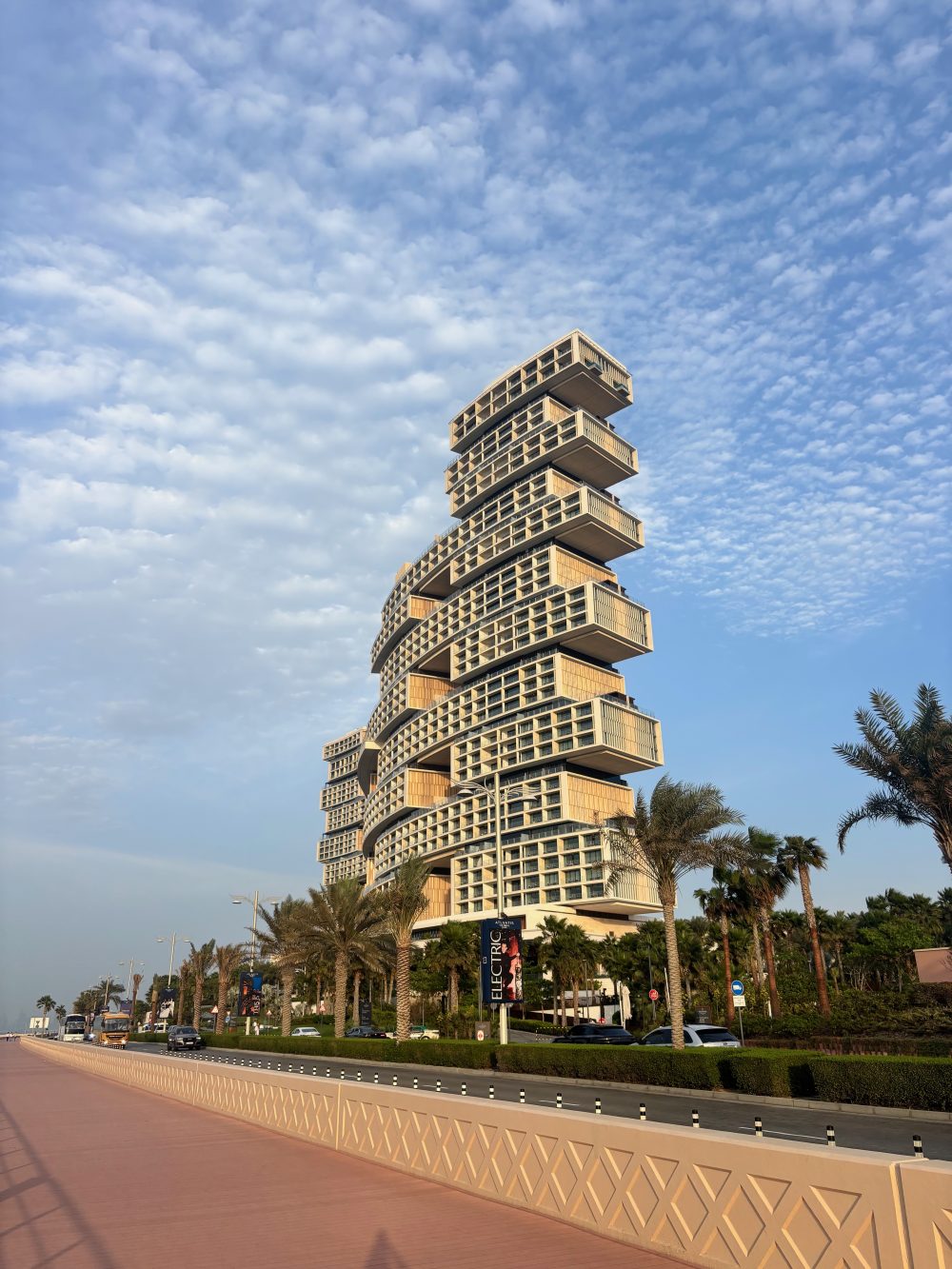
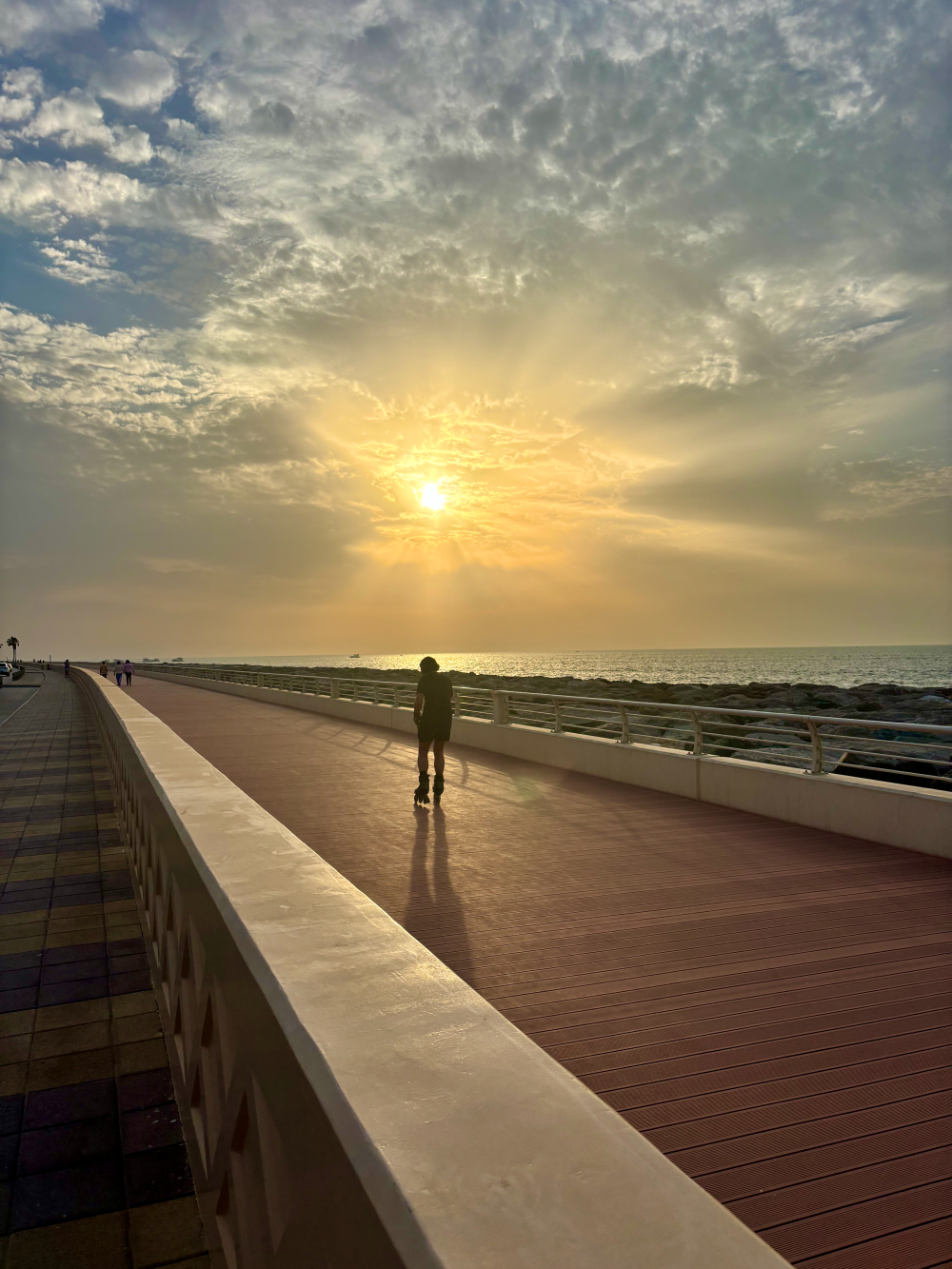
Altantis, The Palm
There aren’t many hotels that can be considered a destination in their own right, but the iconic Atlantis resort is one of those. Incredibly, it has 1,538 rooms, 21 restaurants and bars and 1.4km of private beach. For external guests, there is The Lost Chambers aquarium and the super fun Aquaventure World waterpark, both of which have entry fees. Quite a number of the restaurants are also open to external visitors too, but the private beach is just for hotel guests or those spending the day at the waterpark.
You can buy your entry ticket to Aquaventure World here (from £68 per person), or buy a combo ticket (from £78 per person) that includes the Aquarium too.
More recently, Atlantis, The Royal opened which is one of the world’s most luxurious resorts. Day visitors are welcome to purchase certain pool passes, as well as visit the spa and the array of restaurants and bars.

Exploring the Palm Jumeirah
To explore the Palm, the best way is to travel its trunk by the Palm Monorail. You can either buy individual tickets or an all-day pass. You can read more about this in my guide to public transport in Dubai here.
There are four stops, with the middle two (Al Ittihad Park and Nakheel Mall) actually being really close together. You can hop off at Al Ittihad Park to explore the greenery and the West Palm Beach area, before going back in at Nakheel Mall.
At the final stop (Atlantis The Palm), you can cross over the road onto the Palm Jumeirah boardwalk. This actually extends the full crescent and is around 11km (from the Rixos Hotel at one end, to the One&Only Palmilla at the other end). Whilst there isn’t a public bus service that can you take you to the start point, if you take a quick taxi from the Atlantis Hotel to either of those hotels, you can enjoy an excellent run or walk across the top of the Palm.
If beaches aren’t your thing, or exploring the hotels and beach clubs, then there’s not much else to do on the Palm, other than marvel at its engineering!

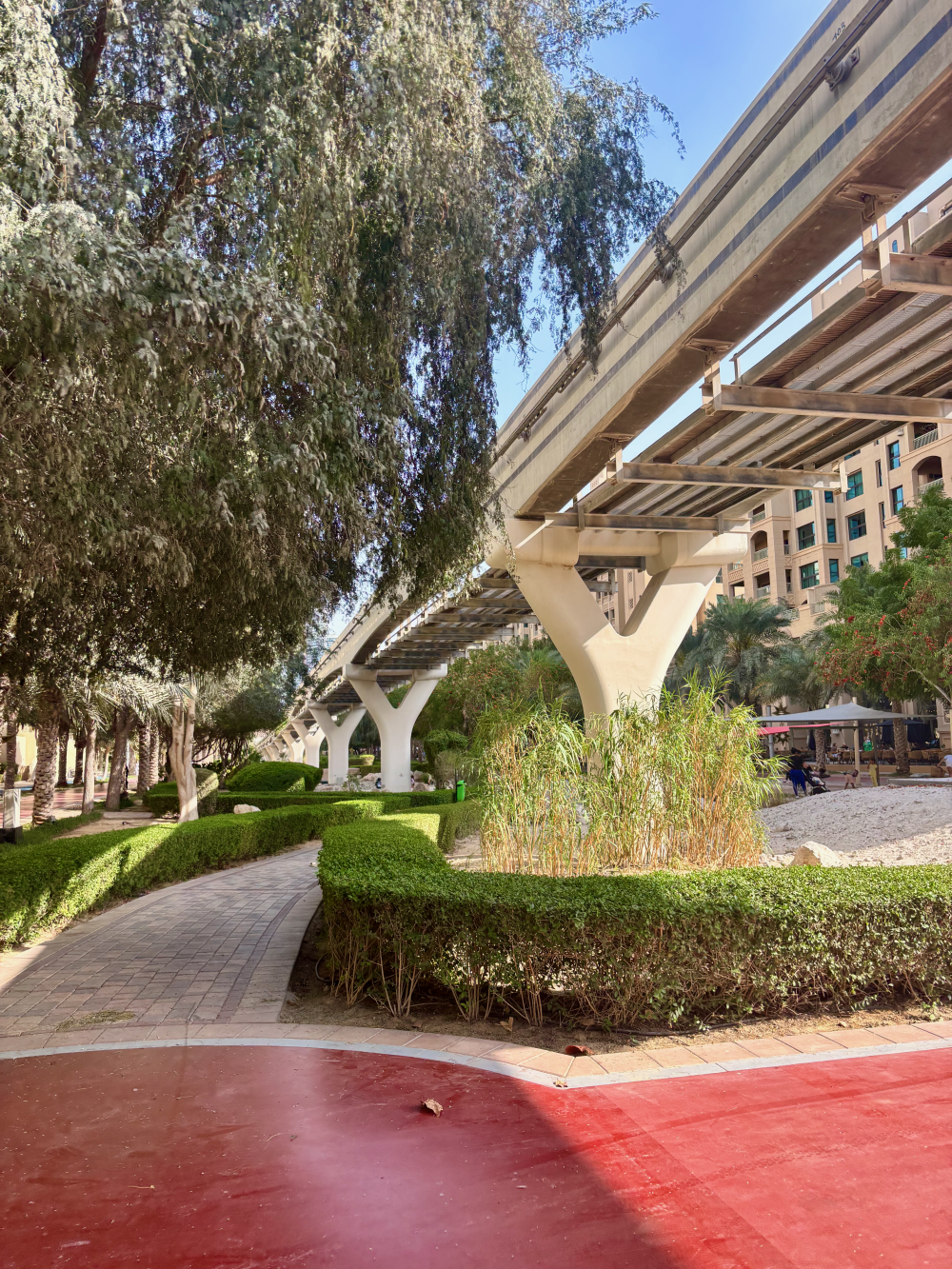
Where to Stay
Without doubt, the two Atlantis Hotels are iconic on the Palm and offer quite unique experiences. But there’s no shortage of other fantastic hotels. Here’s my pick of the best of the hotels on The Palm:
Affordable:
- Aloft Palm Jumeirah (from around £104 per night)
- The Retreat MGallery by Sofitel (from around £116 per night)
- Taj Exotica (from around £185 per night)
Mid-range:
- Sofitel Dubai, The Palm Resort & Spa (from around £203 per night)
- Jumeirah Zabeel Saray (from around £213 per night)
- Waldorf Astoria Dubai (from around £217 per night)
Luxury:
- Atlantis, The Palm (from around £300 per night)
- Anantara The Palm (from around £322 per night)
- W The Palm (from around £373 per night)
- Raffles The Palm (from around £430 per night)
- Atlantis, The Royal (from around £502 per night)
- One&Only The Palm (from around £596 per night)
Staying on the trunk of The Palm near Nakheel Mall is typically a literally more affordable. My pick of the stays for here would be FIVE Palm (around £250 per night), the Hilton (around £245 per night), the Fairmont (from £262 per night) or the Marriott (around £363 per night). Alternatively, the serviced apartments at Cheval Collection’s Cheval Maison The Palm can be great if you need more living space (from around £172 per night).

JBR and Dubai Marina
JBR means Jumeirah Beach Residence, and the beach here is lined with a promenade of restaurants, cafes, hotels, boutiques, markets and a mall. This beach is particularly popular with water sports and camel rides, and even a huge inflatable water park in the calm, warm waters of the Arabian Gulf. Behind JBR is Dubai Marina, and there’s even more shopping and dining here to enjoy, as well as being a great place to start boating adventures.
A few recommendations include:
- Marina, Atlantis, Palm & Burj Al Arab Speedboat Tour (from £31 per person)
- Self-Drive Boat Experience for 1 or 2 People (from £36 per person)
- Sunset or Dinner Cruise with Live Music & Open Bar (from £44 per person)
- Mega Yacht Dinner Cruise with Buffet (from £62 per person)
- Private Boat Cruise from Dubai Marina (from £83)
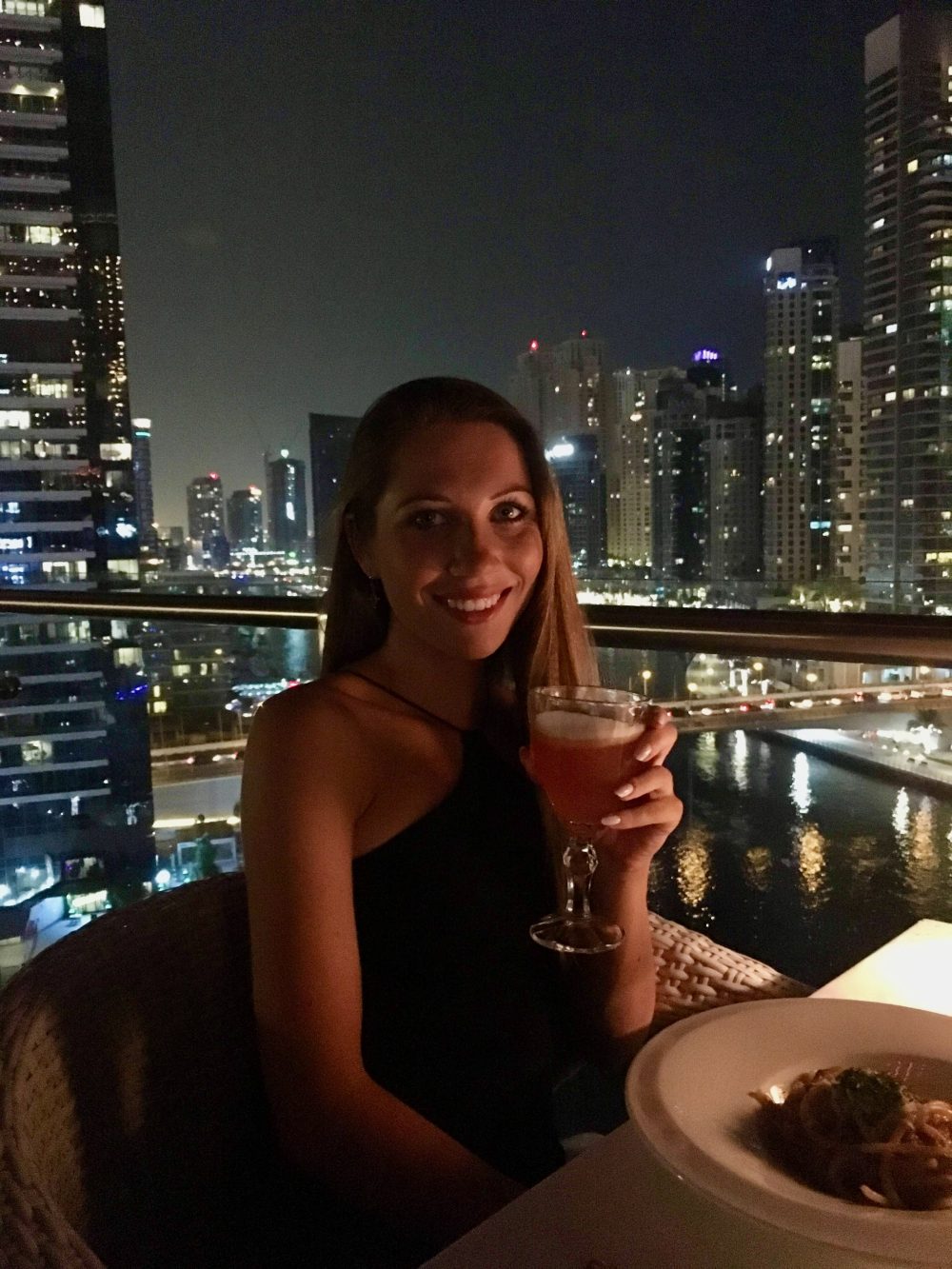
The beach at JBR is over 1.7km long and is open to the public. The hotels here have roped off sunbathing areas for hotel guests, but otherwise, there’s a huge expanse for sunbathing and walking. You’ll also find plenty of places to hire sunbeds and lockers for the day, For more energetic activities, you’ll also find a 600m running track, an outdoor gym and a beach volleyball court.
JBR Walk is the area’s main promenade, with dozens of dining spots ranging from lively bars in the evening, to pretty cafes for early morning breakfast.
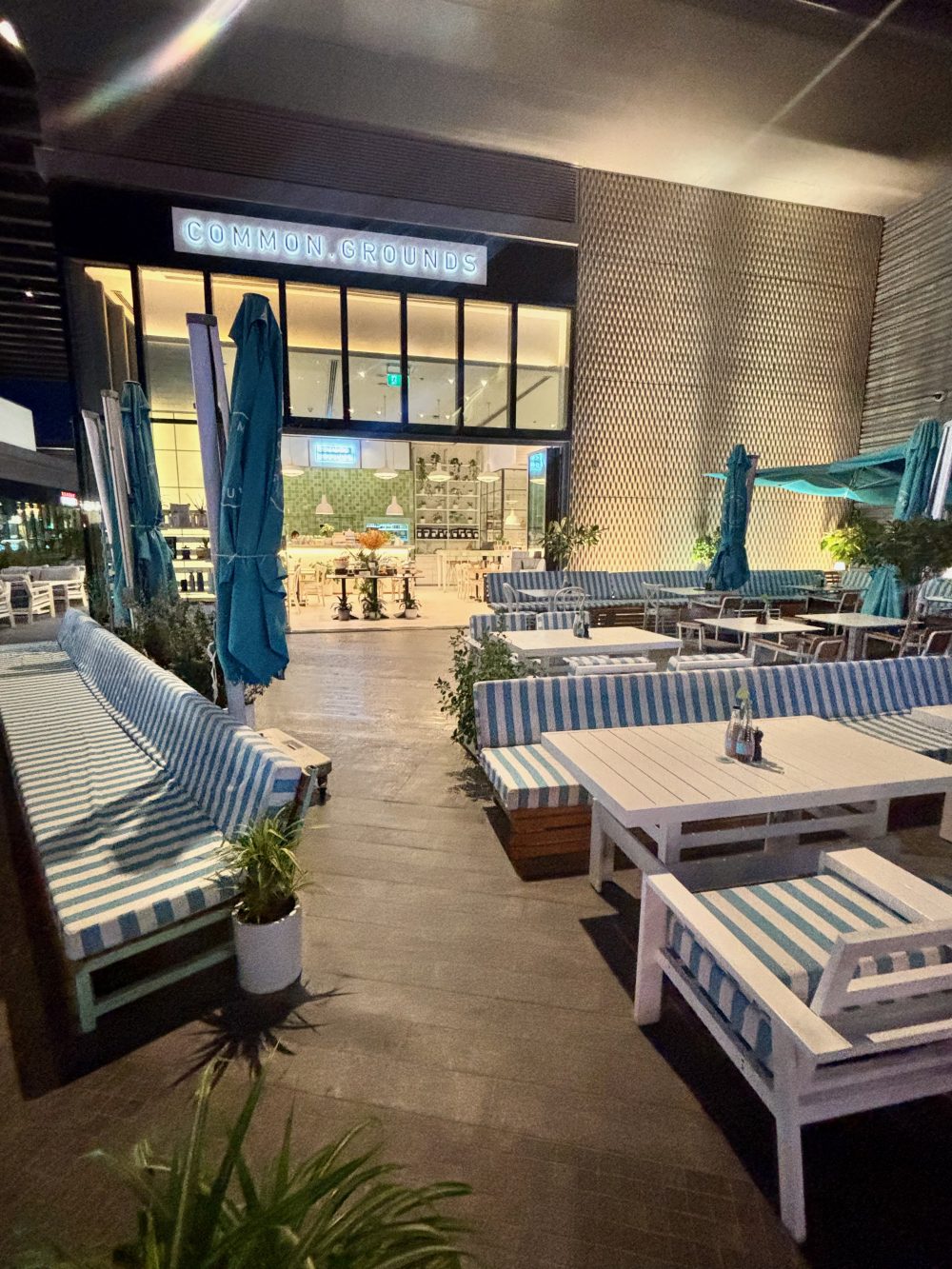
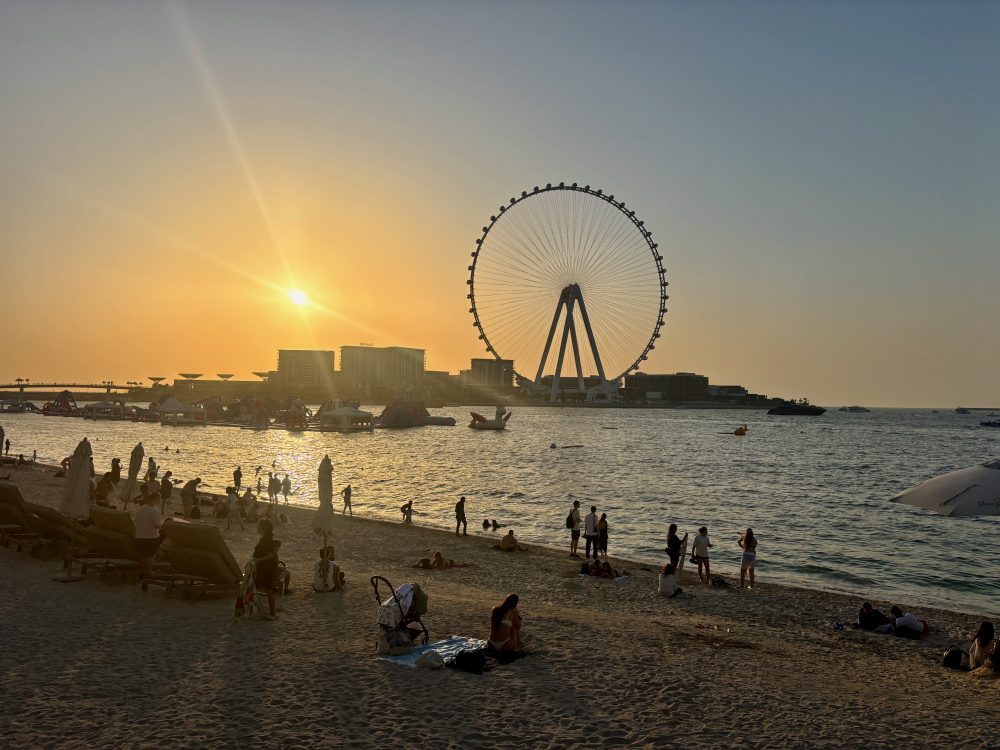
Where to Stay
There’s plenty of choice in JBR or the Dubai Marina area. In fact, this neighbourhood is home to some of Dubai’s best five star hotels. This includes the stunning Address Beach Resort (around £600 per night) and the Ritz Carlton (around £370 per night). Here’s a few suggestions covering every price point:
Affordable:
- Rove Dubai Marina (from around £109 per night)
- Radisson Blu Residence (from around £138 per night)
- Marina Byblos Hotel (from around £154 per night)
Mid-range:
- Sheraton Jumeirah Beach Resort (around £258 per night)
- Hilton Dubai The Walk (from around £260 per night)
- Hilton Dubai Jumeirah (around £270 per night)
- Al Habtoor Grand Resort, Autograph Collection (from around £289 per night)
Luxury:
- Le Royal Meridien Beach Resort and Spa (around £334 per night)
- Rixos Premium Dubai JBR (around £340 per night)
- Five Luxe JBR (around £371 per night)
- DoubleTree by Hilton Dubai Jumeirah Beach (from around £382 per night)
- Ritz Carlton (around £580 per night)
- Address Beach Resort (around £600 per night)
Bluewaters Island
This man made island resort is located just off the JBR coastline and a pedestrian bridge connects the two if you fancy walking over to the island. Bluewaters is home to one of Dubai’s best hotels – Banyan Tree Dubai as well as Ain Dubai, the landmark ferris wheel. There’s also plenty of shopping and activities such as the adults-only games and entertainment centre, Brass Monkey.
Unless you’re staying on the island, you probably don’t need more than a few hours to wander around, but it’s worth checking out their events page as lots of local activities tend to take place.

Where to Stay
The best place to stay on Bluewaters Island is definitely the stunning Banyan Tree Dubai hotel, which opened in 2024. Room rates start from around £880 per night.
And if your budget doesn’t stretch to an overnight stay, then it’s still worth visiting for a day. You can book a day pass to Banyan Tree Dubai here.
Adjacent to the Banyan Tree Dubai is the Delano, offering a luxury stay at a slightly more affordable pricepoint. Room rates at the Delano start from around £470 per night.

Dubai’s Arts Neighbourhoods
Al Quoz and Alserkal Avenue
Al Quoz is a newly developed vibrant arts and cultural hotspot which is transforming the city’s industrial district. A little bit like Wynwood in Miami, this neighbourhood is seeing warehouses including those of Alserkal Avenue, being converted into modern, innovative exhibition spaces, art galleries and performance spaces. It is transforming the area into one of the major art hubs in the emirate.
Alserkal Avenue is the heart of this creative neighbourhood. Activities here could include anything such as late-night pop art events, boutique shopping or independent film screenings.
Al Quoz isn’t brilliantly connected by public transport, so best to arrive by taxi. There are some bus routes serving the area though, or you can take the metro to Noor Bank station and taxi from there. It is worth nothing though that this isn’t really a neighbourhood with many hotels, so it’s best to stay somewhere like Downtown and travel into Al Quoz.


Dubai’s Desert
Few places in the world have such a large metropolis within a short drive of such extensive desert. It really makes Dubai a unique destination for a twin centre adventure!
Desert Safari
Dubai’s desert is packed with different activities and opportunities to understand the nomadic Bedouin people.
One of the most popular activities in Dubai is a desert safari. There are dozens of tours offering hotel pick up and then a desert adventure every day. Pick up is normally around 2-3pm in a 4×4 jeep, where you drive to the edge of the desert. The driver stops, deflates the huge tyres, and then takes the guests on an epic sand dune adventure. It’s unmissable on any trip to Dubai!
Sit in the backseat (or the front seat, if you’re wanting an extra thrill) and hold on tight as the driver manoeuvres over the sand dunes at high speeds and with great skill!
There’s normally quite a few photo stops as the sun is setting, before they drive you onwards to a traditional-style Bedouin camp to enjoy an Emirati feast under the stars.
Here, there are also dozens of activities on offer, such as camel riding, falconry and sandboarding.
Arrange your desert safari here:
- Dubai: Evening Desert Safari with Camel Ride & Stargazing (from £50 per person)
- Premium Safari, Camel Ride & Al Khayma Camp 3-Buffet (from £80 per person)
- Dubai’s Best Desert Safari: Live Show & Gourmet BBQ Dinner (from £116 per person)
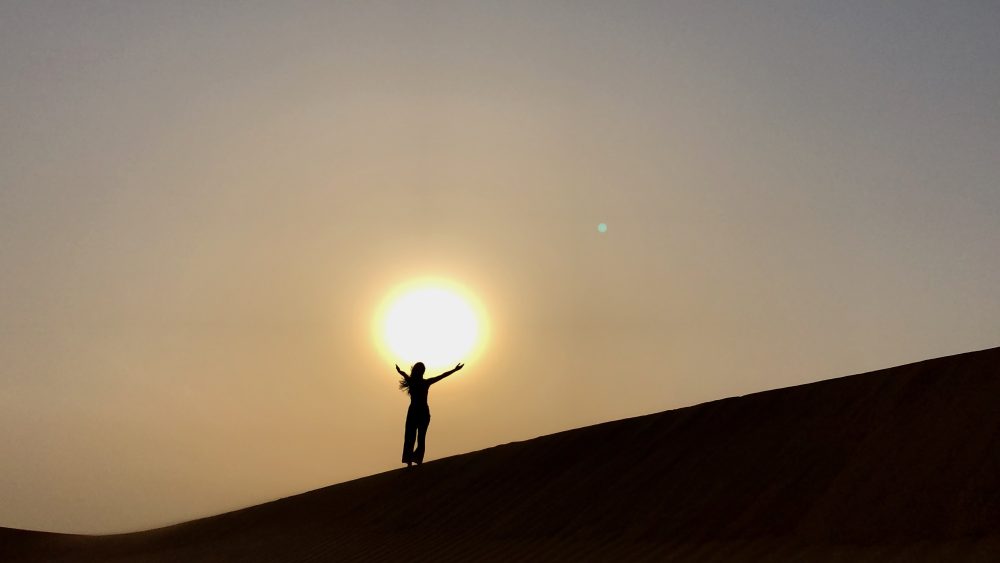
Overnight stays in the desert
For longer desert adventures, consider an overnight stay. For example, the Al Marmoom Bedouin Experience is a unique cultural safari that lets you experience life as a Bedouin nomad and teaches guests key skills to survive in Dubai’s unforgiving desert. This tour here offers an experience where you head into the desert in vintage jeep, before having the opportunity to ride camels and have dinner at Al Marmoom.
Camping under a ceiling of stars is an incredible, Bedouin experience too. This is definitely a more affordable option but there are also glamping options too. Here are a few brilliant tours:
- Dubai: Overnight Safari, Dinner, Stargazing & Al Khayma Camp (from £182 per person)
- Dubai: Heritage Desert Safari with Overnight and Breakfast (from £226 per person)
- Dubai: Overnight Safari with Luxury Dome Stay & Stargazing (from £365 per person)
Aside from this, there are some seriously amazing, luxury offerings in the desert near Dubai. The Al Maha Desert Resort & Spa takes glamping to the next level with luxury tented-style villas in a resort setting, each featuring its own private infinity pool. It’s a next level stay, with the bedouin villas starting from £1,400 per night.
And for a truly incredible experience, the famous Bab Al Shams is a rustic-chic desert oasis resort offering an array of activities and world-class hospitality. Rates here are around £460 per night.
Other desert activities
If the timing is right (October to April) make sure to visit the Dubai Camel Racing Club or the Camel Polo. It’s an exciting experience to watch the proud Emiratis cheer on the camels as they thunder along the sandy tracks.
Although sandboarding is often included as an activity at one of the desert safari camps, it’s awesome to do as a separate excursion if you’re a true adrenaline junkie. The most popular site for this is the Big Red dune, considered the Emirate’s ultimate ‘black run’ for sandboarding. This sand mountain rises 300ft and makes for quite a ride!
Other ways to explore the desert include hiring a quad bike or taking on the 50km cycling loop on the Al Qudra Cycling Track. This is located in the middle of the Al Marmoom Conservation Reserve and offers wonderul scenery.
Finally, a sunrise or sunset hot air balloon is a magical experience, and provides a special birds-eye perspective of the stunning desert below.
For something a bit different, another location worth visiting is Global Village. This mammoth cultural destination showcases tradition and foods from nearly every country in the world. It’s open every winter (October to early May) and is quite unlike anywhere I’ve ever been. In some ways it feels like a theme park without the rollercoasters but there’s plenty to do, from its amusement park to entertainment, shopping and games. It’s worth a visit one evening, and with an entry fee of just AED25 (£5) (midweek), it’s a great activity.
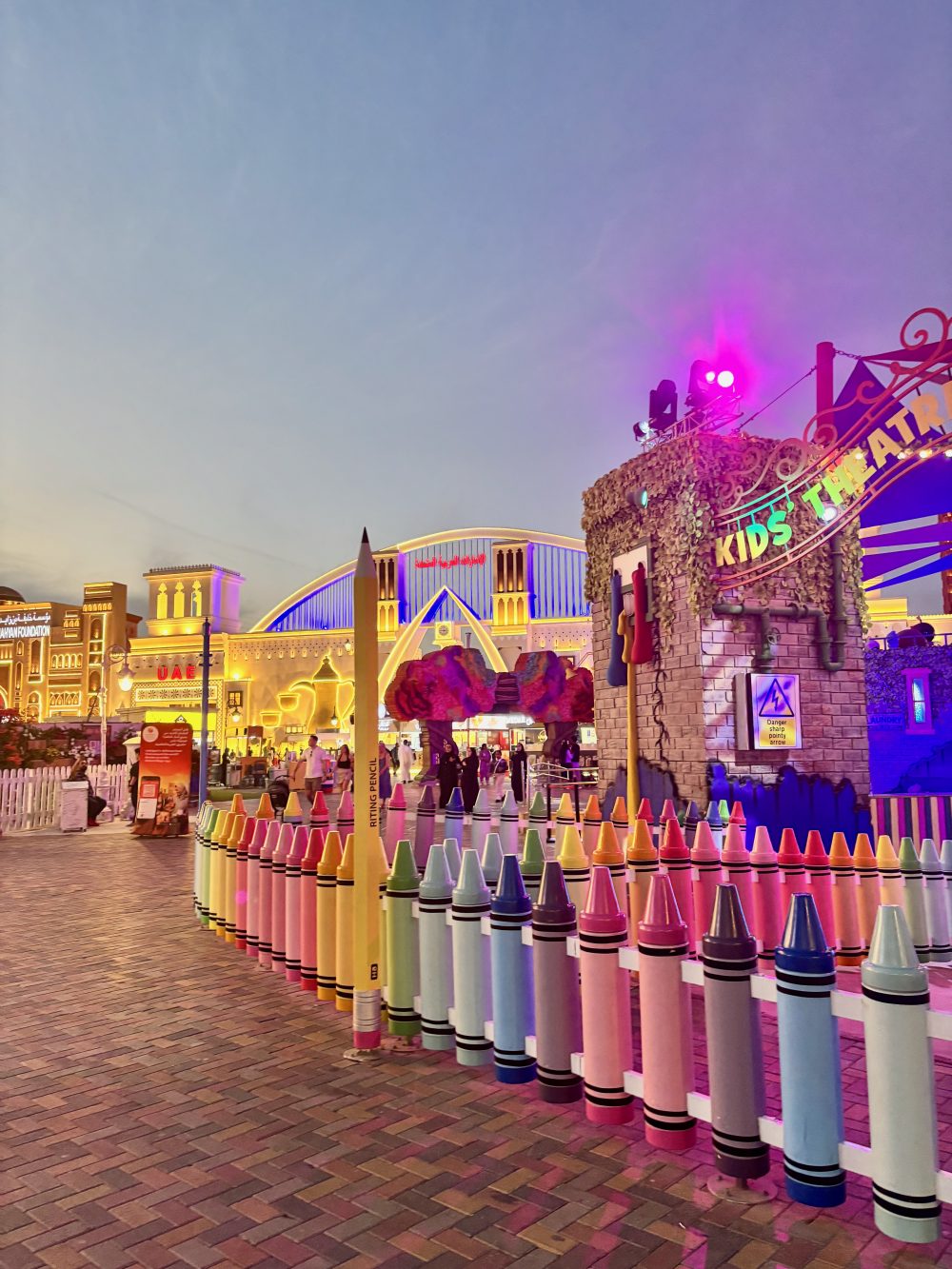


Dubai Parks and Resorts
Dubai Parks and Resorts is the region’s largest integrated theme park destination. It comprises of three theme parks, a water park and an indoor play world spread across the desert. The three theme parks include Motiongate™ Dubai, which brings to life some of Hollywood’s most beloved movies and characters and Real Madrid World Dubai – the first of its kind anywhere in the world. Then there is the incredible LEGOLAND® Dubai and LEGOLAND® Water Park. Together, they feature 15,000 Lego models and more than 60 million Lego bricks.
Nearby is also IMG Worlds of Adventure, which is home to four themed zones of Cartoon Network, Lost Valley Dinosaur Adventure, MARVEL and IMG Boulevard.
It’s a good idea to purchase tickets for these parks in advance:
- Dubai: MOTIONGATE ™ Theme Park Entry Ticket
- Dubai: LEGOLAND® Theme Park Entry Ticket
- Dubai: LEGOLAND® Water Park Entry Ticket
- Dubai: Real Madrid World Theme Park Entry Ticket
- Dubai: Dubai Parks and Resorts™ Multi Parks Pass
Hatta
If outdoor pursuits and getting into nature is your thing, then make sure to visit the scenic setting of Hatta. It’s just a 90 minute drive from Downtown Dubai, so can easily be included in a long weekend in Dubai.
Hatta is a mountain conservation reserve nestled amidst the majestic Hajar Mountains. This mountain range extends for 700km and is the highest mountain range in the eastern Arabian Peninsula.
It’s a great example of an ecotourism attraction with plenty of sustainable activities on offer. It’s well worth a visit to explore the diverse flora and fauna of the region, as well as chance animal encounters. . You could spot Arabian oryx, local mountain goats and white desert antelopes. Or even an Arabian leopard, if you’re really lucky!


Best Things to Do in Hatta
Hatta is the destination in the UAE for nature enthusiasts and adventure seekers. The Hatta Wadi Hub serves as the central starting point for a lot of activities, including archery, wall climbing and axe throwing. It also has some great foodie options, as well as BBQ grills, if you want to bring your own food.
For keen cyclists, there is a stunning 17km mountain bike trail in Hatta. And for those that prefer to explore on foot, hikers can embrace over 33km of hiking trails.
The Hatta Dam is perfect for kayaking. Or if you prefer, take the 5km cable car across the Dam to the Um Al-Nesoor summit, 1,300m above sea level.
Make sure to also visit the restored old Hatta Heritage Village. This traditional settlement is complete with stone houses still filled with furniture and crockery, as well as a tall defensive tower. Nearby is also the Hatta Honey Bee Discover Centre, which is home to a huge hive filled with thousands of honeybees. This experience is really interesting insightful and you can even don full protective equipment.
Some excellent tours include:
- Hatta Discovery: Unlimited Kayak & Honeybee Adventure (from £132 per person)
- Dubai: Hatta Heritage Village Tour with Kayaking (from £62 per person)

Where to Stay in Hatta
Although Hatta is easily visited on a long weekend in Dubai, if you do want to visit for longer, there are some excellent places to stay in Hatta.
The JA Hatta Fort Hotel offers stunning panoramic mountain views with chalets perched on the mountain side. Rooms here start from around £157 per night.
Another option is to stay in the region’s first ever trailer hotel at Sedr Trailer Resort, or the Hatta Resorts, which is a unique lodge in the mountains.

